
- Chinese Culture

Complete Guide to Six Different Types of Chinese Tea
China, hailed as the birthplace of tea, boasts a rich tradition that has endured centuries. Our meticulous study will cast a spotlight on the esteemed varieties: Green Tea, Black Tea, White Tea, Oolong Tea, Yellow Tea, and Dark Tea. Each type, steeped in history, craftsmanship, and regional distinction, reflects the epitome of Chinese tea mastery.
This guide serves as a refined compass, catering to the seasoned tea aficionado and those eager to cultivate a discerning palate alike. Prepare to immerse yourself in the sophisticated allure of Chinese tea culture, as we dissect and celebrate the Six Types of Chinese Tea Classification, each steeped in its own tale of tradition and flavor.
You might also be interested in: 🍲 Top 22 Local Chongqing Hot Pot Restaurants for 2023
Table of Contents
A history of chinese tea, six types of chinese tea classification, unveiling china’s six tea types: a conclusive overview, china travel planning guide&faq.
Disclosure: This article contains affiliate links. If you make a purchase after clicking one of these links, I earn a small commission at no extra cost to you. You can learn more about this in my disclosure policy.
Chinese tea history dates back over 5,000 years, evolving into a rich tapestry of cultural significance and craftsmanship. Legend credits Emperor Shennong for discovering tea in 2737 BCE, emphasizing its medicinal properties. Initially consumed for its healing attributes, tea gradually transformed into a staple in Chinese culture.
During the Tang dynasty (618-907 CE), tea-drinking gained aristocratic favor and became a form of social currency. The Song dynasty (960-1279 CE) saw the rise of tea ceremonies, emphasizing the preparation and presentation of tea as an art. Ming (1368-1644 CE) and Qing (1644-1912 CE) dynasties witnessed the growth of diverse tea varieties, production techniques, and the establishment of tea houses.
Tea culture’s zenith coincided with the Tang and Song periods, influencing poetry, philosophy, and painting. Tea’s spiritual and meditative qualities found expression in the philosophy of Cha Dao, the Way of Tea. Today, China’s tea heritage persists, with its nuanced rituals, diverse tea types, and profound cultural significance continuing to captivate tea enthusiasts worldwide.
Black Tea (“hong cha”)
Chinese black tea, known as “hong cha” (红茶) in Mandarin, has a rich history and a diverse range of varieties.
The origins of Chinese black tea can be traced back to the 16th century in the Wuyi Mountain region of Fujian Province. One of the earliest and most famous varieties is Zheng Shan Xiao Zhong, often referred to as Lapsang Souchong in the West.
Here are some key points about Chinese black tea:
- Processing: Chinese black tea undergoes full fermentation, which sets it apart from green and oolong teas. The leaves are withered, rolled, oxidized (fermented), and then fired to halt the oxidation process.
- Flavor Profile: Chinese black teas are known for their bold and robust flavors. The degree of fermentation contributes to a spectrum of tastes, ranging from sweet and malty to smoky and fruity. The aroma is often complex, with hints of floral, honey, and sometimes earthy notes.
- Varieties: In addition to Zheng Shan Xiao Zhong, there are several other famous varieties of Chinese black tea. These include Dian Hong from Yunnan Province, Keemun from Qimen County in Anhui Province, and Lapsang Souchong, which is renowned for its distinctive smoky flavor.
- Tea Regions: Different provinces in China are known for producing unique black teas. Besides Fujian, Anhui, and Yunnan mentioned earlier, other regions such as Hunan, Guangdong, and Sichuan also contribute to the diversity of Chinese black tea.
- Cultural Significance: Chinese black tea is an integral part of Chinese tea culture. It is enjoyed throughout the day and is often served during meals. It’s also a common choice for traditional Chinese tea ceremonies.
- Global Impact: Chinese black tea varieties have gained international recognition and are exported worldwide. They are appreciated for their unique flavors and diverse profiles, contributing to the global appreciation of black tea.
Primary categories of Chinese black tea:
Chinese black tea encompasses a diverse range of types, with origins spanning a wide geographical area. Categorization is typically based on processing methods and tea appearance, resulting in three main types: Souchong Black Tea, Congou Black Tea, and Broken Black Tea.
Souchong Black Tea: Souchong black tea marks the inception of Chinese black tea, originating in the 16th century, particularly in the Wuyi Mountain region.
Among Souchong Black Tea, only lapsang souchong has endured for centuries. Traditional lapsang souchong has a more fragrant and refreshing taste with a lingering sweetness. It possesses unique floral, honey, and pine smoky aromas, providing a distinct layering and a delicate, rich taste when consumed.
Congou Black Tea: Gongfu black tea emerged later than Souchong Black Tea and evolved from it. Due to its meticulous craftsmanship, it is named Congou black tea, reflecting the effort involved in its refined production.
Representative varieties include Keemun from Anhui, Dian Hong from Yunnan, and Min Hong from Fujian.
- Keemun : This tea, originating from Qimen County in Anhui, is prized for its winey, fruity, and slightly floral characteristics.
- Dian Hong : Known for its rich, malty flavor, Dian Hong hails from Yunnan Province and often features golden tips.
Broken Black Tea: Highly traded globally, the production of Broken Black Tea involves withering and rolling the tea leaves, followed by machine cutting to break the leaves into smaller pieces. After this, the tea undergoes fermentation (oxidation) and drying to achieve the desired flavor profile.
Unlike traditional Chinese teas, broken black tea is ideal for quick brewing with milk and sugar, offering a fast and convenient preparation method.
Broken Black Tea can be further categorized based on flower color, variety, and appearance into different types such as leaf tea, broken tea, leaf tea, and powder tea.
Green Tea (“lv cha”)
Chinese green tea is one of the most well-known and widely consumed types of tea globally. In contrast to the intense nature of black tea, green tea tends to be more refreshing and delicate. Green tea originates from the northern parts of Sichuan and the southern regions of Shaanxi.
Chinese green tea has a long history that dates back thousands of years. It is deeply ingrained in Chinese culture and has been enjoyed for its refreshing taste and potential health benefits.
📌TIPS: China’s most abundant tea type, green tea, thrives across provinces and autonomous regions. Zhejiang, Anhui, and Jiangxi lead in both volume and quality, serving as central hubs for production. Internationally, Chinese green tea dominates trade, constituting over 70% globally and reaching 50+ countries, including North Africa, West Africa, France, the United States, and Afghanistan. On a global scale, green tea sales surpass one-third of domestic sales, playing a crucial role in crafting flower tea as its primary raw material.
Here are some key points about Chinese green tea:
- Processing: The distinctive feature of green tea is its minimal oxidation during processing. After the tea leaves are harvested, they undergo withering, pan-frying (or steaming), shaping, and drying. This minimal processing helps to preserve the natural green color of the leaves and retains the original flavors and antioxidants.
- Flavor Profile: Chinese green teas offer a wide range of flavors, aromas, and appearances. Common flavor notes include grassy, vegetal, nutty, sweet, and sometimes floral. The specific taste can vary depending on the tea variety, growing conditions, and processing methods.
- Varieties: There are numerous varieties of Chinese green tea, each with its unique characteristics. Some well-known varieties include Longjing (Dragon Well) from Hangzhou, Bi Luo Chun from Jiangsu, Mao Feng from Huangshan, and Gunpowder tea from Zhejiang.
- Regional Differences: Different regions in China are known for producing green teas with distinct qualities. For example, Longjing tea from Zhejiang is famous for its flat, sword-shaped leaves and chestnut-like flavor, while Dragon Well tea from Anji is celebrated for its pale green color and sweet, delicate taste.
- Health Benefits: Chinese green tea is often touted for its potential health benefits. It is rich in antioxidants, particularly catechins such as epigallocatechin gallate (EGCG), which have been studied for their potential anti-inflammatory and antioxidant properties. Green tea is also believed to support metabolism and cardiovascular health.
- Preparation: Chinese green tea is typically prepared using lower water temperatures compared to black or oolong teas. The leaves are often steeped multiple times, with each infusion bringing out different aspects of the tea’s flavor profile.
- Global Popularity: Chinese green tea has gained international popularity, and its consumption extends far beyond China’s borders. It is widely available in various forms, including loose-leaf tea, tea bags, and even in flavored blends.
Primary categories of Chinese green tea:
The classification of green tea is contingent upon the diverse methods employed in its drying and fixation, encompassing Chao Qing (Stir-Fry Green), Hong Qing (Baked Green), Shai Qing (Sun-Dried Green), and Zheng Qing (Steamed Green).
Chao Qing (Stir-Fry Green):
Stir-fried green tea is the result of green tea that has undergone a pan-frying process. The finished tea adopts different shapes such as long strips, round pearls, flat, needle, and spiral shapes, depending on the mechanical or manual forces applied during drying. This leads to categories like long-stir-fried, round-stir-fried, and flat-stir-fried green tea.
Notably, Xi Hu Long Jing (Dragon Well) is a widely recognized type of stir-fried green tea.
Hong Qing (Baked Green):
Hong Qing, also known as Baked Green Tea, undergoes a drying process using a baking tray. This method imparts a fragrance that is clear and elevated, resulting in a fresh and pure taste. The aroma of Baked Green Tea is not as robust as that of Stir-Fry Green.
Notable varieties of Baked Green Tea include Huangshan Maofeng, Lu An Gua Pian, and Taiping Houkui.
Shai Qing (Sun-Dried Green):
Sun-Dried Green Tea, is dried using sunlight, producing a style distinguished by a heightened fragrance and a robust taste, coupled with the distinctive scent of sun-drying.
Zheng Qing (Steamed Green):
Chinese steamed green tea, is a type of green tea that undergoes a steaming process during its production. Steaming is a key step in the traditional Chinese method of crafting green tea, and it helps to halt the oxidation of the tea leaves, preserving their natural green color and fresh flavors. Enshi Yulu, produced in Enshi City, Hubei Province, is a typical example of Steamed Green.
Oolong Tea (“Qing cha”)
Qing Cha, or oolong tea, traces its roots back to the Qing Dynasty. It occupies a middle ground in terms of taste, marrying the robust essence of black tea with the subtle and fresh notes characteristic of green tea. For individuals who find black tea overpowering and green tea too mild, oolong tea stands out as an excellent alternative.
Here are some key points about Chinese oolong tea:
- Processing: Chinese oolong tea is a traditional and diverse category of partially oxidized tea that falls between green tea (unoxidized) and black tea (fully oxidized). Oolong tea undergoes a unique processing method that involves withering, bruising or rolling, steaming and oxidation, resulting in a wide range of flavors and aromas.
- Flavor Profile: Lighter oolongs tend to have floral and fruity notes, while darker oolongs can feature more roasted, toasty, or even woody flavors. Some oolongs have a buttery or creamy texture, especially those produced in Taiwan.
- Health Benefits: Oolong tea contains antioxidants, such as catechins, which may have health benefits, including potential support for metabolism and heart health.
- Preparation: Oolong teas are typically brewed with water temperatures ranging from 185°F to 205°F (85°C to 96°C), depending on the specific oolong type. Oolong leaves are well-suited for multiple infusions, allowing drinkers to experience the evolving flavors of the tea.
Primary categories of Chinese oolong tea:
Oolong tea is primarily produced in the provinces of Fujian, Guangdong, and Taiwan. Due to varietal differences, oolong tea is categorized into four types: Northern Fujian Oolong, Southern Fujian Oolong, Guangdong Oolong, and Taiwanese Oolong.
Northern Fujian Oolong:
Representative varieties include Da Hong Pao (Big Red Robe), Northern Fujian Shui Xian, and Cinnamon Oolong. Northern Fujian Oolong undergoes a relatively heavy fermentation, resulting in a darker appearance. However, its infusion is bright, with a rich aroma. Da Hong Pao, in particular, is renowned worldwide and is hailed as the “sacred tea.”
Southern Fujian Oolong:
Tie Guan Yin (Iron Goddess of Mercy) and Southern Fujian Shui Xian are prominent representatives of Southern Fujian Oolong, mainly cultivated in the Anxi, Nan’an, and Yongchun regions. Southern Fujian Oolong undergoes a lighter fermentation but has a heavier rolling process, resulting in a greenish hue and a fresh, delicate taste.
Guangdong Oolong:
Key products from Guangdong include Phoenix Shui Xian and Phoenix Dan Cong. The complex and rigorous production process of Guangdong Oolong ensures exceptional quality, earning it widespread appreciation.
Taiwanese Oolong:
Initially influenced by Fujian, Taiwan has since developed its distinct Oolong tea styles, including lightly fermented and heavily fermented Oolongs. Representative products include Dong Ding Oolong, Bai Hao Oolong (Oriental Beauty), and Ali Shan Oolong. These Taiwanese Oolongs tend to be neutral in taste, neither bitter nor astringent, offering a refreshing and sweet flavor.
Yellow Tea (“huang cha”)
Yellow tea is a unique and relatively rare category of Chinese tea that undergoes a special processing method, resulting in its distinctive characteristics.
Here are some key points about Chinese yellow tea:
- Processing: Yellow tea is produced through a process known as “sealed yellowing” or “men huan” in Chinese. This process involves allowing the tea leaves to yellow slightly after an initial fixation step, which is similar to green tea processing. The leaves are then wrapped or covered, creating a sealed environment that promotes further oxidation and a unique yellowing of the leaves.
- Flavor Profile: Yellow tea is known for its smooth and mellow flavor profile. It shares some similarities with both green and oolong teas but has its own distinct taste. The yellowing process imparts a mellower and less grassy flavor compared to green tea, often with a subtle sweetness and a characteristic yellow liquor.
- Health Benefits: Like other types of tea, yellow tea is rich in antioxidants, particularly catechins. It also contains theanine, an amino acid that contributes to the tea’s calming effects. Some studies suggest that yellow tea may have potential health benefits, such as supporting cardiovascular health and providing anti-inflammatory properties.
- Caffeine Content: Yellow tea generally contains a moderate amount of caffeine, falling between the levels found in green tea and black tea. It offers a middle ground for those seeking a balance between the gentle stimulation of green tea and the stronger kick of black tea.
- Limited Production: Yellow tea is produced in smaller quantities compared to more common types like green or black tea. The specialized processing and care required during production contribute to its limited availability.
Primary categories of Chinese yellow tea:
There are several types of yellow tea, but they can mostly be divided into: Huang Ya Cha, Huang Xiao Cha, Huang Da Cha .
Huang Ya Cha – Yellow Tea Buds:
Fresh leaves, tenderly picked around Qingming, processed as single bud or one bud and one leaf. The leaves are robust and upright. They offer a fresh, light, and mellow flavor without the astringency or grassiness found in green tea.
Representative Teas: Jun Shan Yin Zhen from Yueyang, Hunan, Meng Ding Huang Ya from Ya’an, Sichuan, Huo Shan Huang Ya from Huo Shan, Anhui, among others. Jun Shan Yin Zhen is considered a top-grade tea with a relatively high price.
Huang Xiao Cha – Small Leaf Yellow Tea:
Huang Xiao Cha is harvested in mid to late April, crafted from one bud and two leaves or one bud and three leaves, slightly inferior to Yellow Tea Buds. The tea leaves are slightly curled, and the liquor is bright orange-yellow, offering an even more mellow and sweet flavor.
Representative Teas: Wei Shan Mao Jian from Ningxiang, Hunan, Ping Yang Huang Tang from Wenzhou, Zhejiang, Yuan An Lu Yuan from Yuan An, Hubei.
Huang Da Cha – Big Leaf Yellow Tea:
Harvested with one bud and four or five leaves, typically measuring 10-13 centimeters, Huang Da Cha is characterized by its large branches and leaves, a rare sight among various tea types in China. Recognized by consumers for its appearance, with thick stems and large leaves, the tea produces a deep yellow liquor, presenting a heavily roasted, darker brown appearance, and a nutty, smooth taste.
Representative Teas: Jin Zhai Huang Da Cha from Wuhu, Anhui, Huo Shan Huang Da Cha from Huo Shan, Anhui.
Dark Tea (“hei cha”)
Chinese dark tea, also known as “Hei Cha” in Chinese, is a category of fermented or post-fermented tea that undergoes microbial fermentation and oxidation processes during production. Dark tea is distinct from other traditional Chinese teas such as green, black, oolong, and white teas.
Primarily consumed by specific ethnic groups such as the Tibetan, Mongolian, and Uighur communities, black tea is considered a necessity in their daily lives.
Here are some key points about Chinese dark tea:
- Processing: Due to the coarse and aged raw materials, the processing and manufacturing of dark tea generally involve a longer period of pile fermentation. The leaves often exhibit a dark reddish-brown color.
- Flavor Profile: Dark tea has a diverse flavor profile that can include earthy, woody, smoky, and sometimes sweet or fruity notes. The post-fermentation process imparts complexity and depth to the tea.
- Health Benefits: Like other types of tea, dark tea is believed to have health benefits due to its antioxidant content. It is thought to aid digestion, support metabolism, and contribute to overall well-being.
- Appearance: Dark tea leaves can range in color from dark brown to black, depending on the specific type and processing methods used. Compressed forms, such as cakes and bricks, are common.
- Aging Potential: Dark tea, especially Pu-erh, is known for its aging potential. The flavors and characteristics of the tea can evolve over time, and aged dark teas are highly prized among tea connoisseurs.
Primary categories of Chinese dark tea:
Dark tea is primarily produced in regions such as Sichuan, Yunnan, Hubei, Hunan, Shaanxi, Anhui, and others. When categorized by geographical distribution, it includes varieties like Yunnan Pu’er tea, Hunan Anhua dark tea, Sichuan Tibetan tea, Guangxi Liu Bao tea, and Hubei dark tea.
Pu-erh Tea:
The most well-known type of dark tea is Pu-erh, which is produced in Yunnan Province, and holds a special place in the world of tea. Pu-erh can be further classified into raw (sheng) and ripe (shou) varieties. Raw Pu-erh undergoes natural aging, while ripe Pu-erh undergoes accelerated fermentation to mimic the aging process.
💡TIPS: The categorization of Pu’er tea sparks debates—does it warrant its category or align with dark tea? Ripe Pu’er falls under dark tea, but raw Pu’er, a vital component, defies easy classification as dark or green tea. Processing-wise, it diverges from the six major tea types, fueling ongoing debates. The rising popularity of raw Pu’er signifies a quest for its unique identity amid these discussions.
Hunan Anhua Dark Tea:
Hunan Anhua Dark Tea, originating from Anhua County in Hunan, China. Notable for its inclusion of golden flowers (Eurotium cristatum), this dark tea boasts an earthy, smoky flavor profile.
Hubei Dark Tea:
This tea variety is shaped like a long rectangular brick, displaying a green-brown hue. It boasts a pure aroma, a vibrant red-yellow infusion, a rich and delightful taste free from any bitterness, and a long-lasting aftertaste.
Liu Bao Tea:
Originating from Guangxi Province, Liu Bao tea is another popular dark tea. It has a distinct earthy flavor and is often compressed into various shapes for storage and aging.
White Tea (“bai cha”)
White tea is one of the more precious types of traditional Chinese tea and is known for its delicate flavor, minimal processing, and unique appearance.
Here are some key points about Chinese white tea:
- Processing: It is often made from the young leaves and buds of the tea plant. The leaves are typically withered and then dried, allowing natural oxidation to occur to a limited extent. The tea is not rolled or fermented extensively.
- Flavor Profile: Chinese White tea is known for its delicate and subtle flavor. It often has floral, fruity, and sweet notes. The flavor profile can vary depending on the specific type of White tea and the region in which it is produced.
- Health Benefits: Like other types of tea, White tea is rich in antioxidants, which may contribute to its potential health benefits. Some studies suggest that White tea may have anti-inflammatory and cardiovascular benefits.
- Appearance: White tea leaves have a silvery or white appearance, especially in the case of Silver Needle. The leaves are typically large and unrolled, showcasing the natural leaf structure.
Primary categories of Chinese white tea:
White tea is primarily cultivated in the Fuding and Zhenghe regions of Fujian. It encompasses various varieties like Silver Needle, White Peony, Gong Mei, and Shou Mei, distinguished by different tea tree breeds and picking standards.
Silver Needle (Bai Hao Yin Zhen):
Silver Needle is made from the young, unopened buds of the Da Bai (Big White) tea tree variety. Composed of young tea buds covered in fine white hairs, Silver Needle is one of the most prized white teas.
White Peony (Bai Mu Dan):
This tea includes both buds and the two leaves below them. It has a fuller flavor than Silver Needle and may have a slightly peachy undertone.
It boasts a slightly darker liquor and an intense flavor due to later harvesting than Bai Mu Dan. Often confused with Shou Mei, Gong Mei is of higher quality, rated as a third-grade tea.
Harvested later than other white teas, Shou Mei is plucked when the leaves are more mature. This contributes to its earthy and fuller flavor.
Other Chinese Tea Classification
Flower tea (“hua cha”).
Flower Tea” in the context of Chinese tea typically refers to a type of tea that incorporates dried edible flowers into the tea blend. These teas are often appreciated for their aromatic qualities, visual appeal, and potential health benefits
Here are some key points about Chinese flower tea:
- Ingredients: Flower teas are often made by combining dried tea leaves with various edible flowers, such as jasmine, rose, chrysanthemum, osmanthus, and hibiscus.
- Flavor Profile: The flavor profile of Flower Tea can vary depending on the types of flowers used. Jasmine flower tea, for example, may have a sweet and floral taste, while chrysanthemum tea tends to be more earthy and slightly bitter.
- Aroma: One of the defining features of Flower Tea is its aromatic nature. The infusion of flowers imparts a fragrant and often soothing aroma to the tea.
- Health Benefits: Some Flower Teas are believed to have potential health benefits associated with the properties of the flowers used. For example, chrysanthemum tea is thought to have cooling properties.
- Varieties: There are various types of Flower Teas, each named after the primary flower used in the blend. Examples include Jasmine Tea, Rose Tea, Chrysanthemum Tea, and Osmanthus Tea.
- Brewing Method: Flower teas are typically brewed using hot water, and the steeping time may vary depending on the type of flowers used. It’s common to watch the flowers unfurl during the brewing process, adding to the visual appeal.
- Visual Appeal: Flower teas are visually appealing, with the dried flowers adding color and elegance to the tea. Some teas, like blooming teas, are hand-tied bundles that unfurl into a visually stunning display when steeped.
- No Caffeine or Low Caffeine: Many Flower Teas, especially those made solely from dried flowers, are caffeine-free or contain minimal caffeine.
- Common Blends: Blends of Flower Tea with other types of tea or herbs are also common. For instance, Jasmine Green Tea combines green tea leaves with jasmine flowers.
- Processing: Fully fermented, resulting in a vibrant red liquor with a delightful floral and fruity scent and a smooth, lubricating taste.
- Popularity: Globally embraced as the most favored tea type.
- Nature: Gentle and stomach-friendly, offering nourishment and protection.
- Processing: Unfermented with a high amino acid content, resulting in a clear and refreshing tea.
- Nature: Cold; its slightly bitter taste clears heat, brightens the eyes, and provides a cooling effect.
- Benefits: Polyphenols boost alertness, making it suitable for mornings and enhancing work efficiency.
- Precautions: Avoid on an empty stomach and limit consumption for those with sensitive stomachs.
- Processing: Partial fermentation involves a complex production process.
- Nature: Cool; aids digestion, reduces greasiness, and is a leading choice for weight loss.
- Precautions: Avoid drinking on an empty stomach and refrain from tea consumption after alcohol intake.
- Processing: Undergoes low fermentation with a distinctive “sealed yellowing” method, producing a yellow hue in both the liquor and leaves.
- Nature: Cool; promotes mental alertness, aids digestion, and preserves natural compounds with special effects on anti-cancer, antibacterial, and anti-inflammatory properties.
- Fermentation: Undergoes post-fermentation, improving with time for increased aroma.
- Appearance: Develops a reddish-brown infusion with a mature aroma and a mellow, smooth texture.
- Health Benefits: Aids digestion, supports weight management, safeguards cardiovascular health, and promotes intestinal lubrication.
- Processing: Slightly fermented, presenting an ivory-white tea with a clear and fresh taste.
- Nature: Cold, becoming milder with aging; offers relief from heat and summer discomfort.
- Health Benefits: Rich in polysaccharides, aiding in lowering blood lipids and blood sugar.
- Recommendations: Avoid excess consumption of freshly harvested white tea; opt for white tea aged for at least 3 years.
🎫Do I need a visa for China?
Yes. Most visitors to China will need a visa to enter the country. The type of visa you need will depend on the purpose and duration of your trip, as well as your nationality. If you are a resident of the US, you must apply for a Chinese visa at the Consular Office in the country. On the other hand, inhabitants of countries like Japan, Canada, and the UK can request a visa through the Chinese Visa Application Service Center .
🤔 Why is it necessary to install a VPN in China?
In China, the government has strict regulations on internet access, leading to the blocking of popular websites and social media platforms such as Facebook, Twitter, Google, and YouTube. To access these sites, a VPN is suggested as a means of bypassing the restrictions. It is important to choose a reputable VPN provider and use caution while doing so. ExpressVPN has been historically deemed the most reliable VPN for this purpose, despite being heavily targeted by China’s censors. Nevertheless, it is still a widely preferred option owing to its ease of installation and user-friendliness.
📲 Is it necessary to have a Chinese SIM card while in China?
Yes. It is crucial to acknowledge that accessing the internet in China may pose limitations due to certain websites being prohibited or filtered. To ensure uninterrupted connectivity while staying in China, purchasing a local SIM card is advisable. For optimum results, acquiring SIM cards from either China Unicom or China Mobile is recommended. While China Mobile has the most comprehensive coverage in China and is a market leader, China Unicom is more compatible with foreign phones, enabling 3G and 4G services. Or you can purchase a SIM card online .
🔮 Should I buy China travel insurance?
Yes. Although China is generally a safe country for travel, it is still possible to encounter accidents or other unexpected occurrences. Therefore, obtaining travel insurance can provide a sense of security and financial protection. In my research, I have found that World Nomads is a reputable travel insurance provider that covers a wide range of activities and is recommended for the average traveler. Nevertheless, I advise you to compare insurance quotes from various providers before making a decision.
🚙 Can you rent a car in China?
Unfeasible . Obtaining a Chinese driver’s license to rent a car and self-drive may seem like an option, but it is not a practical choice for most foreigners. Therefore, many prefer to opt for a driver or public transportation when navigating China, as it proves to be more convenient.
✈️ What’s the best site to purchase flight tickets for China?
I suggest using Trip for affordable flights to China. As a China-based company, they often offer lower prices compared to foreign companies. Additionally, they offer English-speaking phone support in case of any issues.
🏡 What is the best way to book hotels in China?
Not only does Trip offer a wider range of flight options, but it also provides a greater selection of hotels to choose from. Moreover, Agoda is a reliable resource for hotels throughout Asia.
🎒What do I pack for China?
Travel adapter and converter: China uses a different electrical system than many other countries, so it’s important to bring a travel adapter and converter if you plan to use electronic devices such as phones, cameras, and laptops. Sunscreen: The UV index in China can be high, particularly during the summer months, and prolonged exposure to the sun without protection can cause skin damage and increase the risk of skin cancer. Deodorant: It should be noted that finding deodorant in China may not be a simple task.
📚 Can a guidebook for traveling to China be useful?
Yes . If you’re planning to travel to China for the first time, a travel guidebook can be a valuable resource, and Lonely Planet is one of the most reputable guides available globally. Its comprehensive itineraries and recommendations take into account your personal preferences and can save you both time and money. The insider tips are also extremely helpful in navigating China’s unique cultural landscape like a local.
Enjoy these related articles

Leave a Reply Cancel Reply
Your email address will not be published. Required fields are marked *
Name *
Email *
Add Comment *
Save my name, email, and website in this browser for the next time I comment.
Post Comment
Chinese Tea World
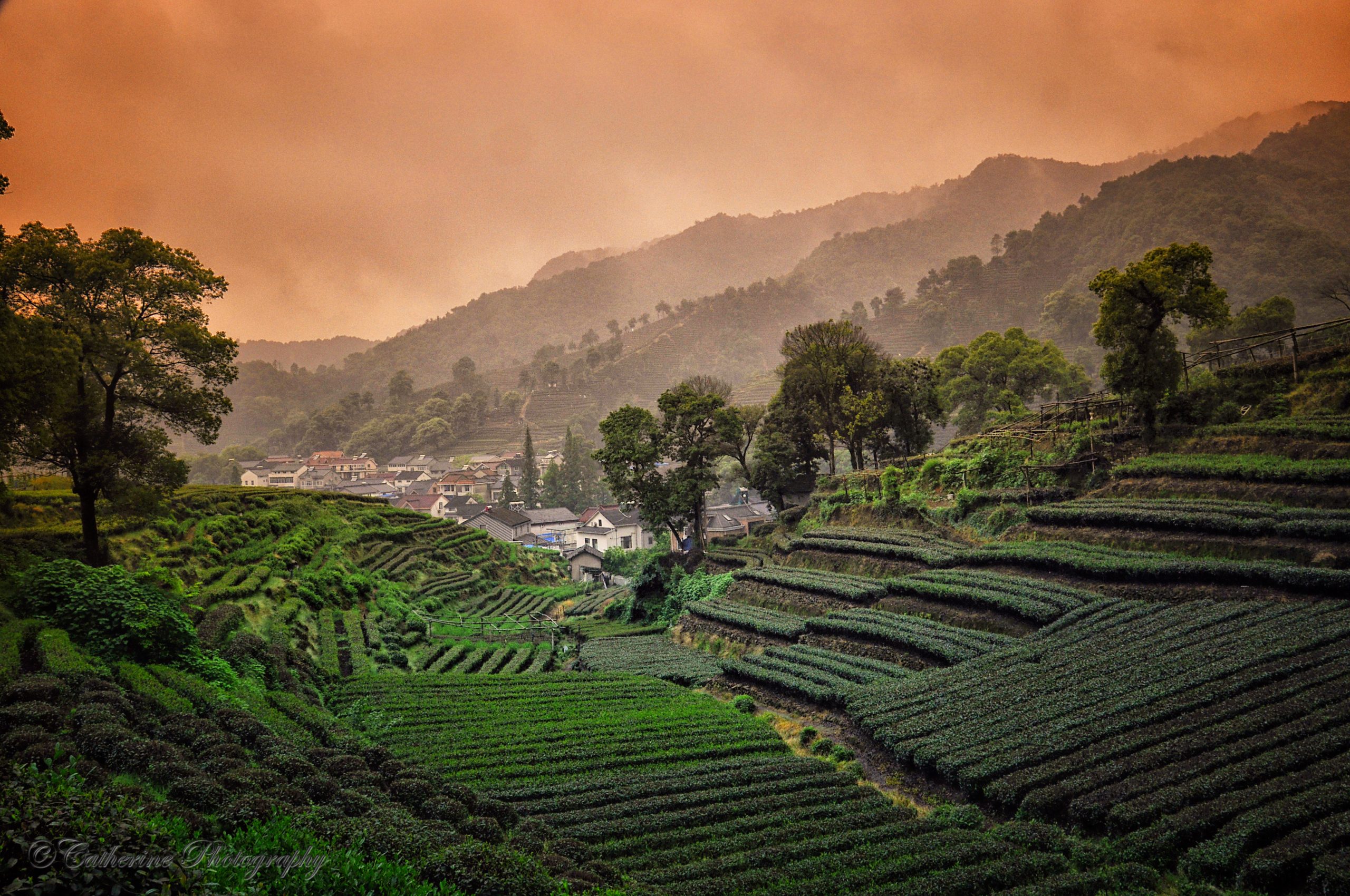
Tea and Travel: 5 Must-Visit Tea Plantations in China
Tea, a beverage steeped in tradition and history, has been an integral part of Chinese culture for centuries. As the birthplace of tea, China boasts a rich tapestry of tea plantations that dot its diverse landscapes. These plantations not only produce some of the finest teas globally but also offer travelers a unique and immersive experience. In this exploration, we will traverse the lush hills and mist-covered valleys to discover the must-visit tea plantations in China, where the art of tea cultivation and the beauty of nature converge.
- Hangzhou: Longjing Tea Plantations
Our journey begins in Hangzhou, where the legendary Longjing tea plantations sprawl across the West Lake region. Longjing tea, also known as Dragon Well tea, is renowned for its flat, slender leaves and delicate flavor. The plantations are nestled in the picturesque hills surrounding the lake, creating a serene atmosphere that complements the tea’s subtle and nuanced taste.
Visitors to Longjing can partake in the traditional tea-picking experience. Against a backdrop of emerald-green terraced fields, locals and tourists alike pluck the tender leaves, an ancient practice that connects them to the land and the tea-making process. The vibrant tea culture is further enhanced by tea houses perched along the hillsides, offering panoramic views of the plantations and a chance to savor freshly brewed Longjing tea.
- Fujian: Wuyi Mountain Tea Plantations
Venturing southeast, the province of Fujian beckons with its Wuyi Mountain tea plantations. Wuyi tea, including Da Hong Pao and Shui Xian, is celebrated for its complex flavors and the unique terroir of the Wuyi Mountain region. The mist-shrouded peaks and rocky cliffs provide an enchanting backdrop to the tea fields, creating an atmosphere steeped in mystique.
Wuyi Mountain is a UNESCO World Heritage site, recognized not only for its tea culture but also for its biodiversity. Travelers can embark on scenic hikes through the Wuyi Mountain Scenic Area, immersing themselves in the breathtaking landscapes and discovering the ancient tea trees that have stood witness to centuries of tea production.
- Yunnan: Puer Tea Plantations
Our tea odyssey takes us southwest to Yunnan, where the Puer tea plantations thrive in the misty mountains. Puer tea, fermented and aged, is a unique variety that captivates tea enthusiasts with its robust flavors and health benefits. The ancient tea trees of Yunnan, some dating back over a thousand years, contribute to the distinctive character of Puer tea.
Yunnan’s Puer tea plantations are often nestled in remote and pristine areas, allowing travelers to escape the hustle and bustle of urban life. The journey to these plantations is an adventure in itself, as visitors navigate through lush forests, cross babbling streams, and ascend to elevations that offer breathtaking views of the surrounding landscapes.
- Anhui: Huangshan Mountain Tea Plantations
Heading eastward, we arrive at the renowned Huangshan Mountain tea plantations in Anhui province. Huangshan Maofeng, a green tea with delicate leaves resembling the downy fur of a newborn animal, is cultivated in the misty high-altitude regions of Huangshan. The unique climate and fertile soil contribute to the tea’s exceptional quality.
Visitors to Huangshan can combine their tea exploration with a hike up the storied Huangshan Mountain, known for its ethereal beauty and ancient pine trees. As the rising sun bathes the landscape in a golden glow, tea enthusiasts can savor the tranquility of the surroundings and indulge in the pure and refreshing taste of Huangshan Maofeng.
- Taiwan: Lishan Tea Plantations
While not part of mainland China, Taiwan’s Lishan tea plantations are an indispensable stop on any tea lover’s itinerary. Nestled in the Central Mountain Range, Lishan tea benefits from the high altitudes and cool temperatures that contribute to its unique floral and creamy notes. The terraced fields, often shrouded in mist, create a dreamlike ambiance.
Travelers to Lishan can witness the intricate process of oolong tea production, from hand-picking the leaves to the precise methods of oxidation and roasting. The local tea farmers, deeply connected to the land, are eager to share their knowledge and passion for tea, offering a genuine and immersive experience.
Tea and travel intertwine in the verdant landscapes of China’s tea plantations. From the storied hills of Hangzhou to the misty mountains of Yunnan, each region offers a distinct tea culture, shaped by centuries of tradition and craftsmanship. These plantations not only produce some of the world’s finest teas but also provide a gateway for travelers to delve into the heart of Chinese tea culture.
As you traverse the tea-scented hills, participate in traditional tea-picking ceremonies, and savor freshly brewed cups overlooking terraced fields, you will find yourself not just tasting tea but experiencing the rhythm of life in these serene and enchanting landscapes. The must-visit tea plantations in China beckon, promising a journey of sensory delights, cultural immersion, and a profound appreciation for the artistry behind every cup of tea.
- China Tours
- Tailor-made
+86 015977325784 [email protected] Mon-Fri 9am - 6pm China Time
- Destinations
- Seniors Pace
- World Heritage
- Zhangjiajie
- Inner Mongolia
- Plan My Asia Trip

China Tea Tours
On the journey of tea discovery in China, you can not only follow the tea farmers to the neat tea mountains to pick tea, and make tea, but also use tea to make food; you can also follow the old tea man to the forest to find ancient tea trees. Set up a stove in the wild to make tea and drink.
Best Chinese tea travel packages
If you are looking for the ultimate Chinese tea travel package that includes visits to the best tea destinations such as Zhangjiajie , Huangshan , Hangzhou , Fujian , and Yunnan , along with an expertly crafted itinerary that allows you to experience the diverse tea cultures and customs of China, luxurious accommodations in top-rated hotels, fine dining experiences featuring regional cuisine, private guided tours led by knowledgeable tea experts, quality transportation in a comfortable vehicle, and personalized attention and service throughout your journey, then look no further than our all-inclusive Chinese tea travel package.

East China & Zhangjiajie
12 Days Shanghai - Suzhou - Hangzhou - Zhangjiajie
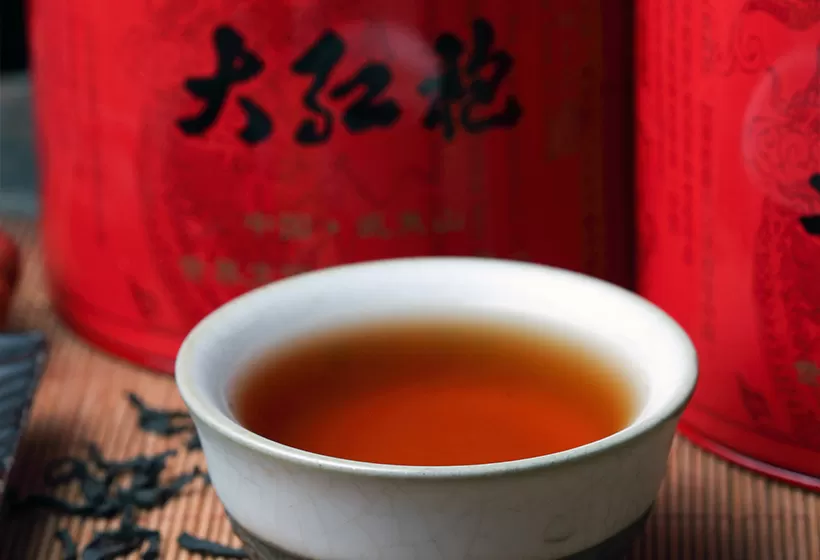
Coastal Tea
13 Days Hong Kong - Xiamen - Wuyishan - Hangzhou - Shanghai
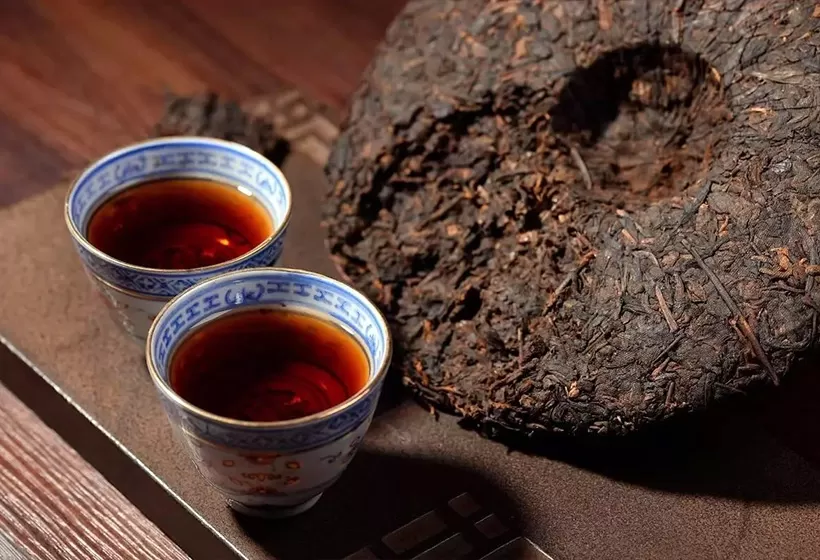
Southwest China
14 Days Chengdu - Xishuangbanna - Pu'er - Kunming - Guilin - Longsheng - Yangshuo - Hong Kong
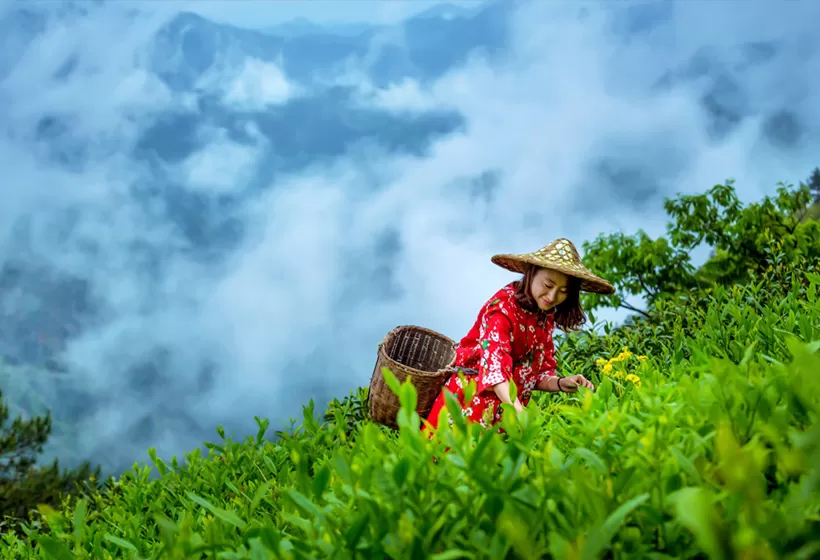
Southern China
22 Days Shanghai - Hangzhou - Huangshan - Wuyishan - Xiamen - Kunming - Pu'er - Xishuangbanna - Chengdu
Top activities in the Tea destinations in China
Some of the top activities to experience in China's tea destinations include visiting tea plantations and learning about tea cultivation, processing and brewing techniques from local tea masters, attending tea ceremonies and tastings to savor different varieties of tea, exploring the history and culture of tea through visits to tea museums and ancient tea houses, and taking scenic walks through tea fields and surrounding landscapes to fully immerse oneself in the serene and tranquil atmosphere of these regions.
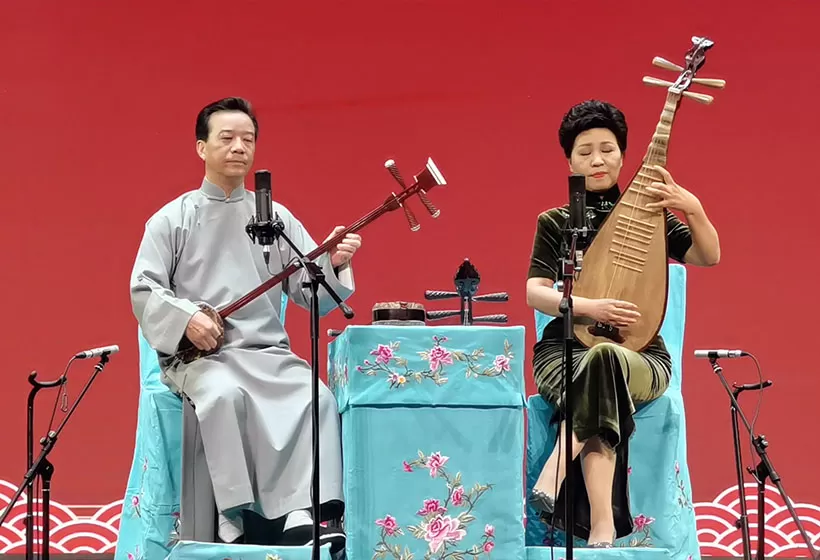
Top Hangzhou activities and Outdoor Adventures :Tea leave picking and making, gastronomy, opera, cycling, etc.
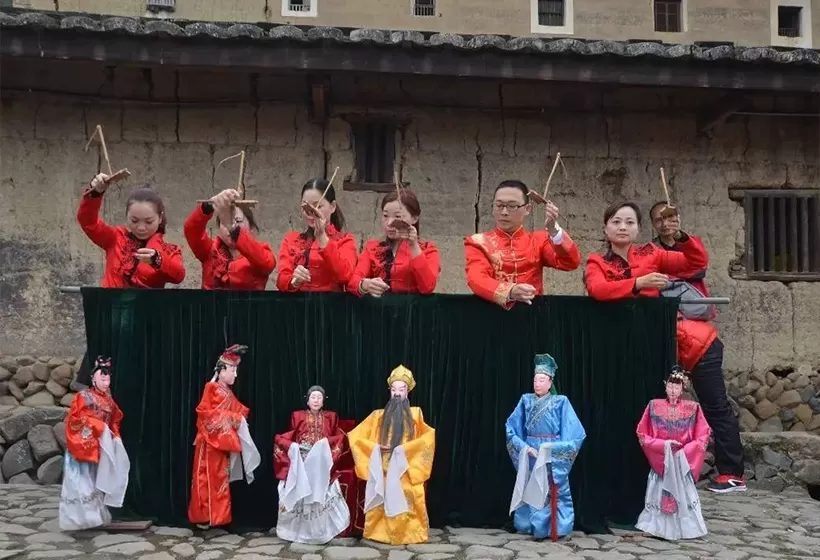
Top activities, what to experience in a Fujian trip :
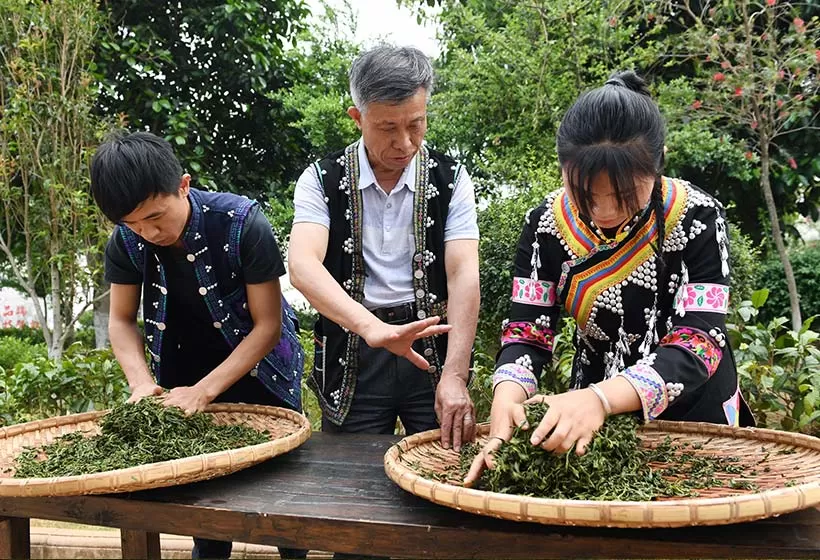
Cultural activities, what to experience in Yunnan :
Our travel expert will reply you in 24 working hours!
Frequently Asked Questions About Tea Tours
1. how many types of chinese tea are there, 2. why do the overwhelming majority of the chinese people like drinking tea, 3. why do almost all the chinese restaurants serve tea, 4. what are some famous tea culture cities in china, 5. can tea be used as food ingredients, 6. can i have some tea-related experience during my tour, 7. why can’t i fall asleep after drinking too much strong tea, 8. i am an office worker, what type of chinese tea is suitable for me, 9. what kind of tea does fujian produce.
FABULOUS TOUR COMPANY
CHINA OCTOBER - NOVEMBER 2019 We researched several companies and studied reviews on Trip Adviser before contacting who did a very China Culture Tour with an initial query. Right from the outset Grace who owns the company was excellent. She emailed detailed with pictures information and a suggested… read more details
Karen from US
Ready to Create a Unique Dream Travel?
Create My Vacation
CONTENT DIRECTORY
- CHINA CULTURE TOUR: OUR CULTURE, YOUR TOUR!
- Best Tailor-made Classic China Tours
- Cultural Experiences for a China Tour
- WOW Seasonal China Tours
- Our Best Tour Ideas for You
CREATE MY TRIP
- 6 Major Types
- 10 Best Chinese Tea
- 7 Wonderful Benefits
- 10 Best Green Tea
- Huangshan Maofeng
- 10 Benefits of Oolong
- Tian Guan Yin
- Jasmine Tea
- 4 Chrysanthemum Tea
- 8 Herbal Tea You can Have a Try
- 8 Weight Loss Tea
- Top 10 Most Expensive Tea
- How to Make Tea
- Tea Ceremony
Tea Culture
The Chinese have a saying: 'Firewood, rice, oil, salt, sauce, vinegar and tea are the seven necessities to begin a day.' Though tea is last on the list, we still can see its importance in daily life. A simple meal in Chinese is Cu Cha Dan Fan, namely coarse tea and tasteless dinner. Even a simple meal is finished off with tea so its importance is obvious. For the Chinese, tea drinking and tasting are not the same. Tea drinking is for refreshment and tonic effect. Tea tasting has cultural meaning. Tea and tea sets should match surrounding elements such as breeze, bright moon, pines, bamboo, plums and snow. All these show the ultimate goal of Chinese culture: the harmonious unity of human beings with nature. Tea is compared to personal character. Its fragrance is not aggressive; it is pleasant, low-keyed and lasting. A friendship between gentlemen is also like a cup of tea. With a cup of tea in hand, enjoying the green leaves in a white porcelain cup, you will feel peace. Fame, wealth and other earthly concerns are far away. It is the symbol of elegance.
- Find a Tour
- China Tours
- Student Tours
- MICE Travel
- Destinations
- Virtual Tours
- Chinese Tea Experience, Beijing

Chinese Tea Experience
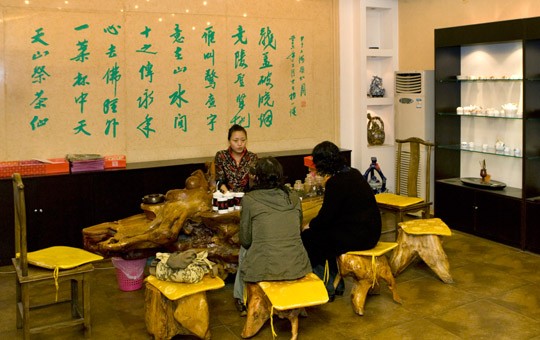
While traveling in China, tasting traditional Chinese tea is a great way to slow down for a couple of hours and refresh your energy while sightseeing, as well as have an authentic cultural experience.
We usually take guests to a tranquil tea house, where you can learn about the history of Chinese tea, as well as the details of the Chinese tea ceremony and tea pouring, in addition to tasting various kinds of tea. You may discover a new favorite type of tea! Some tea houses in China will try to sell you tea, but not the one we take you to; instead, we aim to provide you with an authentic and informative experience of one of China's most famous products.
If you want to buy Chinese tea as a gift or souvenir, we will take you to Maliandao Tea Market, the largest tea market in northern China, where you can step into one of the many stalls and taste various types of tea until you find your favorite. The market also sells tea-related items such as cups and tea sets. Since the market is aimed at wholesalers, prices are usually reasonable, but be sure to bargain to get the best deal.
For those who don't have time to visit the Maliandao Tea Market, we can also take you to Wuyutai Tea Shop, a chain with a long history that has a lot of stores across Beijing .
Popular Tours
- 1-Day Beijing and the Great Wall tour
- 2-Day Beijing tour
- 3-Day Beijing tour
- Golden Triangle of China - 9-Day Beijing, Xi'an, Shanghai tour
- The Classic China Tour - 13-Day Beijing, Xi'an, Guilin, Yangshuo, Shanghai tour
- More Beijing tours ...
Customize a tour that includes this activity
Inquiry form.
1-Day Dragon Well Tea Culture & West Lake Tour
Taste the best chinese tea.
Dragon Well (Longjing) tea is the most famous green tea in China, and it is also ranked No. 1 among China's top 10 teas. Hangzhou, as the birth place of Dragon Well tea, is full of tea culture. If you are a tea fan, this tea culture tour will thoroughly satisfy your thirst. You will have the chance to enter a tea plantation and pick tea-leaves, visit a tea farmer's house and stir-fry tea, learn the art of tea-making, and taste local tea snacks. This is all combined with a West Lake cruise.
- Step into one of the best tea plantations in China and pick tea leaves by hand
- Learn from a local tea specialist the process of stir-frying tea and the art of making tea
- Visit the China National Tea Museum to glean a general idea of Chinese tea classification and history
- Enjoy a bird's-eye view over Hangzhou and West Lake, at Chenghuang Pavilion
- Sample a local tea snacks banquet, while enjoying a traditional stringed and woodwind instrumental performance
Discover real reviews of Highlights Travel Family 's best-rated service across trusted platforms.
Suggested Itinerary
We'll pick you up in the morning from your hotel/ train station, and drive to the place of origin of the best Dragon Well tea – Meijiawu Tea Village . A local tea specialist will welcome you with bamboo baskets, and accompany you to the tea plantation. Your first task will be to choose appropriate tea leaves and pick them in the right way. After tea-picking, the tea specialist will take you home and show you the process of stir-frying tea . This process dehydrates the leaves and helps preserve their beautiful green color. If you like, you can have a go—be careful, though, the huge iron pot is very hot (around 200℃). The tea specialist will show you the art of the tea ceremony, and introduce you to the proper way to taste tea.
Introduction to our tea specialist
Born into a tea family, our tea specialist has been familiar with tea from childhood. With the family tea plantation as inspiration, our specialist is devoted to spreading China's tea culture, and has taken part in many international tea-promotion films.
After saying goodbye to the tea village, we'll drive to the China National Tea Museum . This is China's only museum dedicated to tea. There you will see tea exhibits and precious teaware, and will learn about the general history and classification of tea.
At Chenghuang Pavilion you can have a bird's-eye view over Hangzhou and West Lake. You will have a break and enjoy a Southern Song Dynasty Snacks here.
In the afternoon have a relaxing visit to West Lake , one of the major landmarks of Hangzhou. Stroll alongside the lake, and take a cruise to Fairy Island.
After the tour we will escort you to your hotel/ train station.
Customizing the Tour — According to Your Needs
This tour is very flexible . You can alter the itinerary and extend or shorten it to suit your schedule.
Price includes:
- Private air-conditioned business car with big windows and ample space
- English speaking local guide
- Activities, hotels, and meals listed in the itinerary
- 24/7 helpline for while you are traveling
Your 1:1 travel consultant will reply within 1 working day.
Number in your group
Adults number (age ≥ 18 years old)
Children number
10-17 yrs old
3-9 yrs old
0-2 yrs old
What's your hotel choice?
I prefer to be contacted via:
- 11-Day China Family Tour
- 2-Week China Essence and Panda Tour
- 18-day Classic China Tour with Yunnan
- 2-Week Riches of China
- How to Plan a 10-Day Itinerary in China (Best 5 Options)
- 8 Days in China: Top 15 Tours and Itineraries (2024/2025)
- 2-Week China Itineraries: Where to Go & Routes (2024)
- How to Plan a 3-Week Itinerary in China: Best 3 Options (2024)
- China Weather in January 2024: Enjoy Less-Crowded Traveling
- China Weather in February 2024: Places to Go, Costs, and Crowds
- China Weather in March 2024: Destinations, Crowds, and Costs
- China Weather in April 2024: Where to Go (Smart Pre-Season Pick)
- China Weather in May 2024: Where to Go, Crowds, and Costs
- China Weather in June 2024: How to Benefit from the Rainy Season
- China Weather in July 2024: How to Avoid Heat and Crowds
- China Weather in August 2024: Weather Tips & Where to Go
- China Weather in September 2024: Weather Tips & Where to Go
- China Weather in October 2024: Where to Go, Crowds, and Costs
- China Weather in November 2024: Places to Go & Crowds
- China Weather in December 2024: Places to Go and Crowds
Get Inspired with Some Popular Itineraries
More travel ideas and inspiration, sign up to our newsletter.
Be the first to receive exciting updates, exclusive promotions, and valuable travel tips from our team of experts.
Why China Highlights
Where can we take you today.
- Southeast Asia
- Japan, South Korea
- India, Nepal, Bhutan, and Sri lanka
- Central Asia
- Middle East
- African Safari
- Travel Agents
- Loyalty & Referral Program
- Privacy Policy
Address: Building 6, Chuangyi Business Park, 70 Qilidian Road, Guilin, Guangxi, 541004, China
- 86-19138970032 (GMT+8 18:00~09:00)

- Beijing Xian Tours
- Shanghai Beijing Tours
- Hong Kong Guilin Tours
- Hangzhou Suzhou Tours
- Kunming Lijiang Tours
- Shanghai Yangtze Cruise Tours
- Chengdu Tibet Tours
- More Short Stay Tours
- China Tours in January
- China Tours in February
- China Tours in March
- China Tours in April
- China Tours in May
- China Tours in June
- China Tours in July
- China Tours in August
- China Tours in September
- China Tours in October
- China Tours in November
- China Tours in December

- High Speed Trains
- China Yangtze Cruise Tour
- Photography
- Desert Adventure
- Ethnic Villages
- Biking Tours
- Kung Fu Tours
- Heritage Sites Exploration
- China Spring Tours
- China Summer Tours
- China Autumn Tours
- China Winter Tours
Notice! 2024 available cruise routes include 4~5 days Chongqing-Yichang(most classic) and 11~12 days Chongqing-Yichang-Shanghai(limited).

- Best-value Yangtze Cruises
- Top Family-friendly Cruise Ships
- Top 3 Luxury Yangtze River Cruises
- Yangtze River Highlights
- Yangtze River Cruise Routes
- Upstream or Downstream?
- Dining & Drinking
- Accommodations
- On-board Activities
- Yangtze Cruise Booking Steps

- Inner Mongolia

- Fanjingshan
- How to Plan Your First China Tour
- How to Plan Beijing Tour
- How to Plan Xian Tour
- How to Plan Shanghai Tour
- How to Plan Guilin Tour
- How to Plan Sichuan Tour
- How to Plan Family Tour
- 2024 China Travel Ideas
- Best Time to Visit China
- What to Pack for Your China Journey
- Make Payment in China
- Updated China Travel News
- Ultimate Chinese Visa Guide
- Chinese Visa Types
- Chinese Visa Requirements
- Do I Need a Visa for China
- Chinese Visa Application
- Chinese Visa Exemptions
- 144-hour Visa Free
- Shenzhen Visa on Arrival
- Hainan 30-day Visa Free
- Embassies & Consulates
- Invitation Letter
- Useful Visa FAQs & Tips
- Entry Regulations
- Baggage Allowance
- Customs Declaration
- Exit Regulation
- How to Book Train Tickets
- How to Collect Train Tickets
- How to Cancel & Alter Train Tickets
- How to Read Train Tickets
- China High Speed Train Types
- Seats Class & How to Choose
- Friendly Facilities on the Train
- The Train Station Departure Process
- Available Food and Drinks on the Train
- Western Toilets on the Train
- Luggage Racks & Baggage Allowance
- Beijing Train Stations
- Shanghai Train Stations
- Guilin Train Stations
- Xian Train Stations
- Chengdu Train Stations
- Hong Kong West Kowloon Railway Station
- Beijing - Xian
- Beijing - Shanghai
- Guangzhou - Shanghai
- Shenzhen - Shanghai
- Chengdu - Xian
- Shanghai - Hangzhou
- Shanghai - Xian
- Chengdu - Chongqing
- Kunming - Lijiang
- Beijing Capital International
- Beijing Daxing International
- Shanghai Pudong International
- Shanghai Hongqiao International
- Guangzhou Baiyun International
- Hangzhou Xiaoshan International
- Chengdu Tianfu International
- Chengdu Shuangliu International
- Xian Xianyang International
- Shanghai - Beijing
- Hong Kong - Shanghai
- Guangzhou - Beijing
- Chengdu - Lhasa
- Shanghai - Guilin
- Shanghai - Sanya
- Travel in Spring Season
- Travel in Summer Season
- Travel in Autumn Season
- Travel in Winter Season
- Weather in January
- Weather in February
- Weather in March
- Weather in April
- Weather in May
- Weather in June
- Weather in July
- Weather in August
- Weather in September
- Weather in October
- Weather in November
- Weather in December
- Top 10 China Destinations
- Top 15 Things to Do
- China World Heritage Sites
- Top 10 Best Natural Beauties
- Top 10 Museums in China
- Top 10 Old Towns & Villages
- Five Great Mountains in China
- Top 10 Monasteries & Temples
- Top 10 Ski Resorts
- Top 10 Beautiful Lakes in China
- 7 Best Beaches in Sanya
- Top 6 Beautiful Waterfalls
- Panda Volunteering
- Having fun on Ice and Snow Festival
- About Us Who We Are Our Team Why Travel with Us Feedback & Reviews Travel Stories Travelers' Gallery Payment Guide Customer Support Contact Us
- Tour Experiences
Destinations
- Travel Guide
China National Tea Museum – Gem to Show Chinese Tea Culture
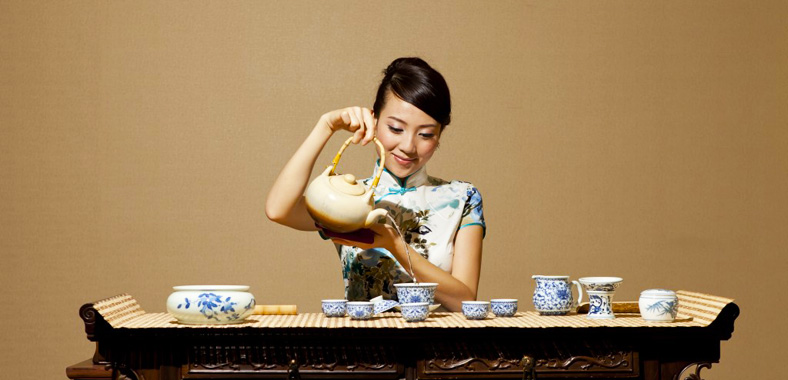
China National Tea Museum Facts
China National Tea Museum is the only museum themed with tea and tea culture in China mainland, so you can know about the culture and history of tea in China, admire exhibits about tea, sample tea, watch tea ceremony performance, learn tea art, and enjoy pleasing scenery of tea plantations.
Type: Museum; Cultural Site; Natural Sightseeing Place
Best Seasons: All Seasons
Recommended Visiting Time: 2-3 hours
Opening Hours: May 1 - October 7: 9:00-17:00; October 8 - April 30: 8:30-16:30 (close on Monday; open on public holidays)
Tickets: Free
Address: No. 88, Longjing Road, Shuangfeng Village, Xihu Distict, Hangzhou, Zhejiang, China
Brief Introduction of China National Tea Museum
Being the only one museum themed with tea and tea culture in China mainland, China National Tea Museum (中国茶叶博物馆) is especially worth for a visit to have a taste of China’s profound tea culture and long history that have been lasting for at least 4700 years. Opened to the public in 1990, with a cover of 2244 square meter for exhibition in the whole construction area of 7600 square meters, this museum perfectly shows the historical development as well as colorful culture of tea, and diverse kinds of cultural relics about tea to visitors. Furthermore, China National Tea Museum offers a great chance to learn about the tea art with a firsthand experience, and that may be the reason that many G20 Leaders’ wives have paid a visit to this museum on their Hangzhou tour in September 2016.
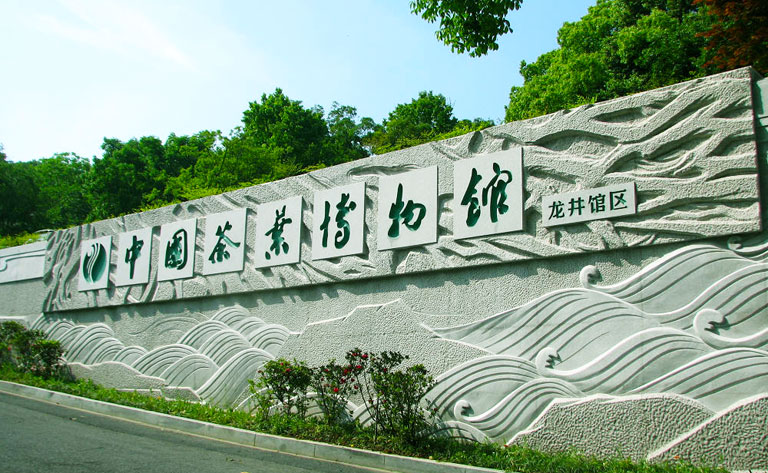
Besides, China National Tea Museum is distinguished from others, because it has no exterior walls but is surrounded with all green plants with thorns and lush tea plantations, which expresses the warm welcome to people from all the directions, particularly tea lovers.
☛ 2 Days Essence of Hangzhou Tour
☛ 3 Days Classic Hangzhou Tour (at Leisure Pace)
Explore the Highlights of China National Tea Museum
There are countless interesting highlights waiting for your discovery, like variety of tea, tea ceremony, tea stories, tea plantations, etc. Just go and find your likes!
Enjoy the Exhibition of Tea Culture & History
To well exhibit the culture and history of tea, China National Tea Museum sets 5 halls within the Building 1.
In the Tea History Hall (茶史厅), you can see the origin, evolution, prosperity and spread of Chinese tea from thousands of years ago, knowing that China is the original place of tea trees. With the very primitive tea sets of each period, poems about tea, and other exhibits, the brilliant tea culture and history of tea spreading over the world are lively showed in front of you.
In the Tea Collection Hall (茶萃厅), more than 100 samples of famous Chinese tea are well exhibited, from the green tea, black tea, oolong tea, to yellow tea, white tea, dark tea, and reprocessed tea, from which you can see how big the family of tea is.
Entering the Tea Information Hall (茶事厅), you can appreciate multiple specimens and pictures of tea and know about the tea knowledge of the cultivation, processing, drinking, preservation , etc. Also, there are some pictures of leaders and famous people who visited China National Tea Museum from home and abroad, demonstrating that tea is a communicating bridge of China and the whole world.
In the Tea Sets Hall (茶具厅), you can admire the diverse sorts of tea sets in different periods in China. Teapots, teacups, tea containers, teaspoons and so on that are made of gold, silver, copper, jade, ivory, etc. from the Neolithic period to the modern times are so delicate in different shapes, giving a chance to know about the change of their looks and functions.
Tea Custom Hall (茶俗厅) exhibits the customs and manners of tea tasting in Chinese provinces, like Yunnan, Sichuan, Tibet, Fujiang, Guangdong, and shows the wonderful tea culture in China by imitating the lively scene of tea making and drinking.
Immerse into the Tea & Performance
Entering the building 3 in China National Tea Museum, you can taste various kinds of tea in the 6 tea rooms of distinct styles, so just release yourself to immerse into the fresh and pleasing aroma of the tea. Furthermore, in the building 4, fantastic performances of tea art and tea ceremony of China and other countries from ancient period to modern times are provided, like the West Lake Tea, Scholar Tea, Buddhist Tea, Kungfu Tea, that express the characteristic of Chinese people and emotion in the oriental region. Japanese tea ceremony of typical specialties is also offered to show the diversity of tea art. Those performances in China National Tea Museum are surely hard-won for you to know about the magic and elegant tea art in our world.
Have Fun in the Tea Experience (Spring)
If you want to get more fun in tea, you can join into the tea plucking in spring to get close into the emerald and fragrant tea plantation and feel the fresh experience of plucking the little green tea leaves from the trees. After the tea plucking, you can continue to watch professional people drying tea with their own hands in the Tea-baking Workshop(焙香簃). Or you can see the working process of the tea drying machines.
This experience is only available in spring because tea leaves are the freshest and best during this season.
Recommended China National Tea Museum Tour Packages:
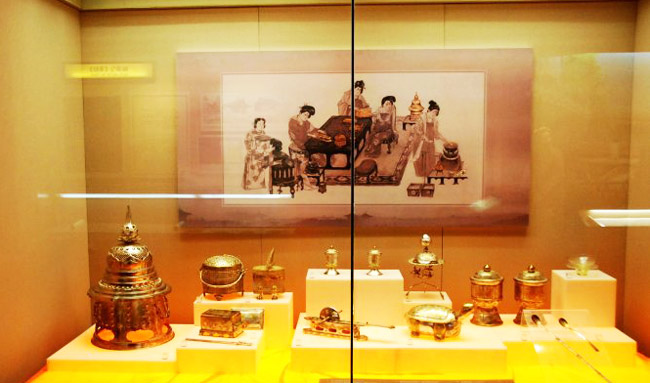
Attend Tea Classes in China National Tea Museum
You want to learn more about tea and tea culture in China? Want to learn about how to taste different kinds of tea? Want to know about the elegant tea ceremony…You may choose the special designed tea classes provided in China National Tea Museum. See the details as following!
Note: The prices of tea classes are for your reference only, for the updated and detailed information of tea classes in China National Tea Museum, please contact our Travel Consultant ! If you are interested in the classes, you can choose your favorite(s) and tell us China Discovery to book the tea class for you in advance!
Wander in the “Garden” of China National Tea Museum
After appreciating the exhibitions and tea, you can spend some time in the garden-like environment of China National Tea Museum. Since there are waterside pavilions, flower corridors, antique Chinese buildings, etc., you can enjoy every minute to get refreshed in the natural beauty of Chinese style. 100 Chinese characters of “tea” in many calligraphic styles, a vivid stone statue of the “Tea Sage” Lu You (陆游), ancient featured buildings of southern China charm, pleasing sound of clear water running from Qiantang River (钱塘江), delicate fragrance of layers of lush emerald tea plantations around, etc. which is really a feast of eyes, ears and nose . Apart from that, there you can find the sundial and gnomon with the real local Hangzhou time that is different from the Chinese Standard Time, and these traditional astronomical instruments in our nation help a lot with the best time and season for tea plantation and tea picking. That is a very important and great part in Chinese tea culture.
G20 Leaders’ Wives Visiting China National Tea Museum
China National Tea Museum was very popular among tea lovers and Chinese culture lovers since its opening in 1990, and it has gained another wave of visitors after the G20 Leaders’ Wives visiting it on September 4th during the G20 Summit in Hangzhou in 2016.
The wife of Canadian prime minister took her daughter to visit China National Museum to be attracted by the profound tea culture in China and watch the tea ceremony performances. The wife of the Argentinian president paid a visit to the tea museum and learned how to stir-fry the tea and found her favorite two kinds of tea. Moreover, the wife of president of European Council visited here and expressed her strong appreciation of Chinese tea and its culture.
☛ 3 Days Hangzhou & Suzhou Beauty Tour by High Speed Train
☛ 5 Days Shanghai Hangzhou Suzhou Highlights Tour
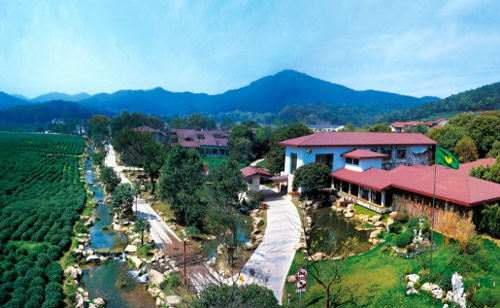
Recommended Way to Explore Tea Culture in Hangzhou
People usually choose to first visit the Longjing Tea Plantations that is less than 3 km away from the museum to get close to the growing condition of the tea and experience the interesting tea picking, and Meijiawu Village as well as Longjing Village are both good choices. After then, transfer to China National Tea Museum and enter the Building 1 to appreciate the exhibition of tea culture, tea history, tea sets, tea customs and other things to feel the strong Chinese traditional art. Then, go to sample tea in diverse kinds in the building 3 and enjoy wonderful and elegant tea art and tea ceremony performances in building 4. Later, admire the scenery of tea plantation and beautiful ancient view in the museum. (For about half day)
Map & How to Go to China National Tea Museum
Situated in Shuangfeng Village (双峰村) of Xihu District (西湖区), in West Lake Tourist Area, China National Tea Museum can be reached by many vehicles.
Independent Travel
Take bus No. 27, No. 87 or No. 27 Regular Bus (27路定时班) to stop at Shaungfeng Station (双峰站)
Taking a taxi to China National Tea Museum is very convenient and more time-saving.
From Hefang Street: 7 km, about 25 min
From Lingyin Temple: 3.5 km, about 8 min
Note: Since China National Tea Museum is located on a mountain and not in a prosperous area, you can take a taxi to the museum but may find it difficult to return to the downtown for the very little taxies there, and bus may be a good choice for getting back.
Travel with China Discovery (Top Recommended):
If you want to get rid of hustle of public transportation and troublesome navigation, you can book a private tour package which covers sightseeing, dining and transfer from us. Our local tour guide and driver will escort you to China National Tea Museum with speed and convenience, and take care of all the details. You just need to focus on sightseeing.
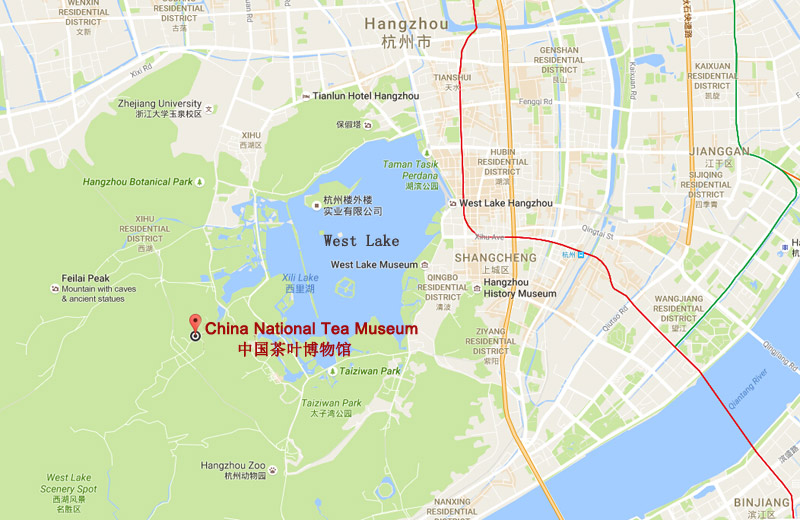
Tips to Visit China National Tea Museum
1. English and Chinese explanatory guide service is provided for fee, and digital voice guide is also available for fee in Chinese, English, French, Japanese, and Korean.
2. If you are very interested in Chinese tea and the fancy tea sets, China National Tea Museum offers a place for you to buy these souvenirs that you can give you your people as gifts.
How to Plan a Hangzhou Tour
Things to Do in Hangzhou: West Lake, Lingyin Temple, Longjing tea Plantation, Hefang Street, Xixi National Wetland Park, China National Tea Museum, China National Silk Museum…
How to Get to Hangzhou: International flights from Singapore (5 hrs.), Seoul (6.5 hrs.), etc., domestic flights from Guangzhou (2 hrs.), Beijing (2 hrs.), etc., or high speed trains from Shanghai (1~2 hrs.), Suzhou (1.5~3 hrs.), Huangshan (1.5~2 hrs.), etc.
Best Time to Visit Hangzhou: all year around
Usually, visitors spend 2 days around to enjoy a classic Hangzhou tour to visit the West Lake Scenic Area , including the amazing West Lake, Lingyin Temple, Longjing Tea Plantations, etc. If you want an in-depth Hangzhou tour, you can also pay another half day or so to visit Xixi National Wetland Park, one day around to Beijing-Hangzhou Grand Canal, or one day or so to Thousand Islands Lake, etc. Check all Hangzhou Tours >>
☛ 3 Days Classic Hangzhou Tour Plus Tea Plantation Exploration
Also, you can spend 1 day to take a side trip to the nearby water towns like Wuzhen and Xitang in Jiaxing, 2~3 days to Putuoshan - one of the four sacred Buddhist Mountains in China, or 1 day to the popular Nanxun Old Town in Huzhou. Check more about Zhejiang Tours >>
☛ 3 Days Best Hangzhou Tour with Wuzhen Water Town
Besides, compared with just travelling Hangzhou, most of the visitors prefer to travel the metropolis Shanghai, Suzhou Gardens and Hangzhou Lakes in One Go! Such an amazing tour will take 5~6 days .
Some visitors also ride a high speed train to Huangshan to visit the world-famous Yellow Mountain. A Hangzhou Huangshan tour needs about 5 days around .
☛ 5 Days Yellow Mountain Tour from Hangzhou
Have your preferences? Please feel free to tell us your likes and let our professional travel consultants customize a personal tour for you!
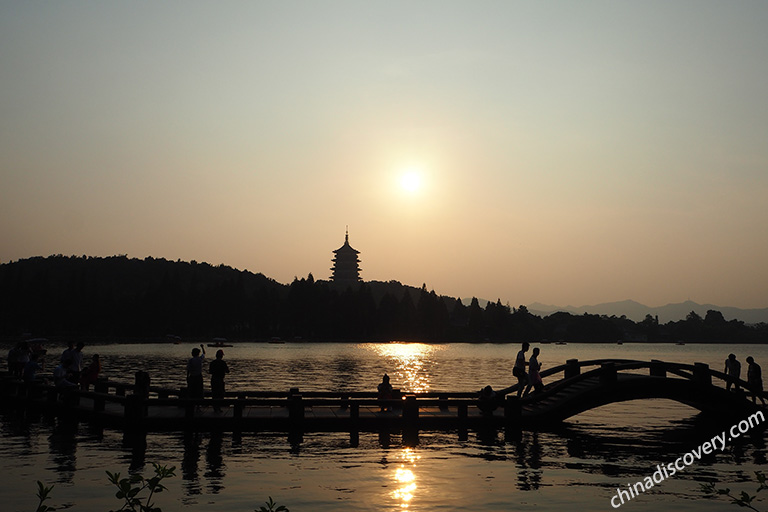
Get Inspired by Real Travel Stories of Our Customers
Since 2012, we China Discovery have helped numerous customers to visit Hangzhou and surroundings. With our fully-inclusive private tour packages, all of our customers enjoyed their trips to the West Lake, Lingyin Temple, etc. Some of them kindly shared their precious photos and stories about their Hangzhou journey, just get inspired now.
"Impression Show is a must see when visiting Hangzhou…" - shared by Nguyen (Read her entire travel story: The Pursuit of Natural Beauty with the Beloved one - 14 Days Beautiful China Exploring Tour )
"This last night in Hangzhou led us to explore a different side of West Lake, vastly changing our erstwhile bland impression of the famed tourist site…" - shared by CS from Singapore (Read her entire travel story: Delightful Journey to Poetic Jiangnan Area )
Besides the wonderful travel stories, many customers who visited Hangzhou with China Discovery also send us their first-hand feedbacks about their trip, feel free to read the Hangzhou Reviews and learn what they say about their experience. If you want to start your Hangzhou tour now, don't hesitate to contact us .
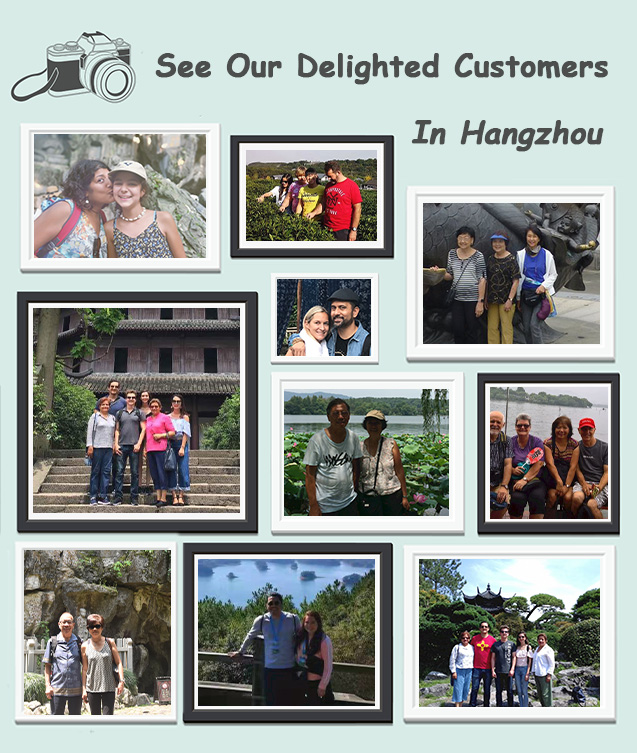
Hangzhou Tours
- Essence Hangzhou Tour
- 3 Days Hangzhou Wuzhen
- 3 Days Hangzhou Suzhou
- Shanghai Hangzhou Tour
Hangzhou Attractions
- Lingyin Temple
- Longjing Tea Plantations
- Hefang Street
- Hu Qing Yu Tang
- China National Silk Museum
- Xixi National Wetland Park
- Liuhe Pagoda
- Qiantang River Tidal Bore
- Wuzhen Water Town
- Xitang Water Town
- Qiandao Lake
Hangzhou Travel Guide
- Things to Do
- Attractions
- Get There & Around
- Get to West Lake
- Airport to City
- Hangzhou to Wuzhen
- Xiaoshan Airport
- Hangzhou Train Stations
- Hangzhou High Speed Train
- Hangzhou Metro
- Hangzhou Bus
- West Lake Boat
- Where to Stay
- Hangzhou Hotels
- Hangzhou Weather
- Hangzhou Maps
- Hangzhou Museums
- Hangzhou Nightlife
- Hangzhou Food
- Hangzhou Biking
- 144-Hour Visa-Free Transit
- Hangzhou Travel FAQs & Tips
- How to Plan Hangzhou Tour
- More Hangzhou Travel Guide
More about Zhejiang Travel Guide
- Popular Zhejiang Tours
- Zhejiang Travel Guide
- Top Zhejiang Destinations
- Top Attractions
- Zhejiang Weather & Seasons
- Zhejiang Maps
- Putuo Mountain
- Nanxun Old Town
- Ningbo Travel Guide
- Jiaxing Travel Guide
- Zhoushan Travel Guide
- Shaoxing Travel Guide
- Yiwu Travel Guide
Recommended Hangzhou Tours
Top 3 Hangzhou tours chosen by most customers to explore Hangzhou in the best way. Check the detailed itinerary, or tailor your own trip now with us.
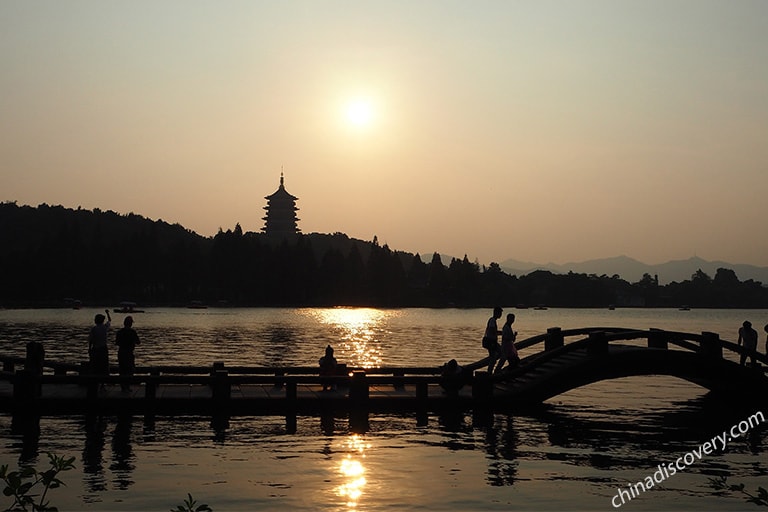
2 Days Hangzhou Essence Tour (Most Time-Efficient)
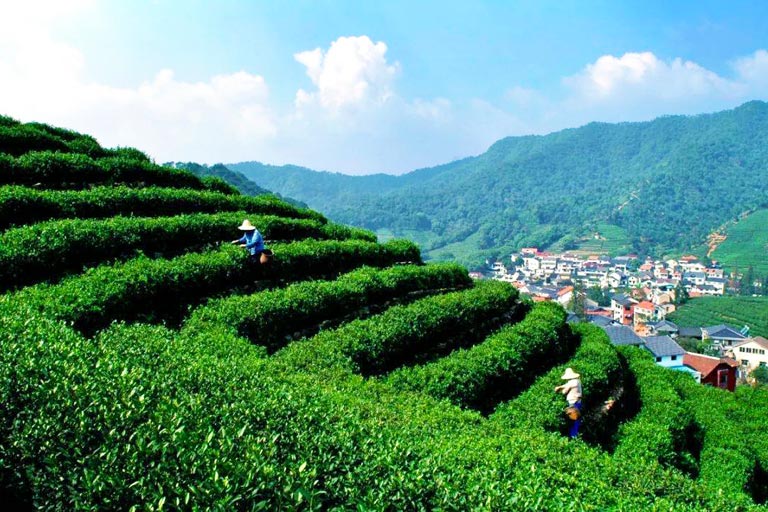
3 Days Classic Hangzhou Tour (at Leisure Pace)
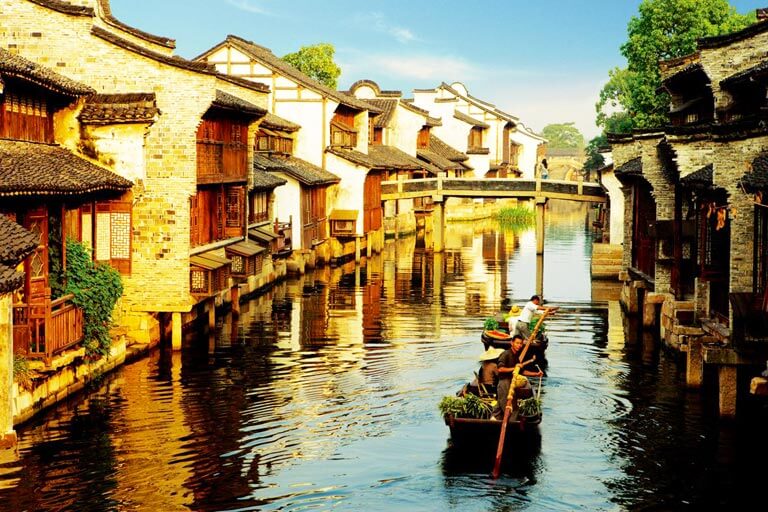
3 Days Best Hangzhou Tour with Wuzhen Water Town
Hangzhou / Wuzhen
Start planning your tailor-made holiday to China by contacting one of our specialists. Once inquired, you’ll get a response within 0.5~23.5 hours.

Have a question? Get answers from our travel experts or guests
- Your Question:
- Your Email:
- Affordable and valuable price
- 100% tailor-made packages
- Highly rated customers reviews
- Efficient customer support

China Tours
- Top 10 China Tours
- Classic China Tours
- China Tours from Beijing
- China Tours from Shanghai
- China Tours from Hong Kong
- China Tours from Chengdu
- Short China Trips
- Customize China Tour
- China Panda Tours
- Family Tour with Kids
- High-Speed Train Tour
- Silk Road Travel
- Yangtze River Cruise
- Hiking & Trekking Tours
- Photography Tours
- China Minority Travel
- Beijing Shanghai Tours
- Shanghai Yangtze Tours
- Chengdu Jiuzhaigou Tours
- Chengdu Lhasa Tours
- Suzhou Hangzhou Tours
- Guilin & Yangshuo
- Zhangjiajie
“Very good experience”
“WONDERFUL 25 DAYS IN CHINA - PRIVATE TOUR”
“Awesome China tour from northeast to southwest”
Any questions, please email us at: [email protected] or call us at: 86-19138970032 (Monday-Friday 9 a.m. to 6 p.m. GMT+8)
- Terms & Condition
- Privacy Policy
- Customer Support
Copyright © 2011-2024. All rights reserved.
Cookie policy
We use cookies to give you the best experience on our website. Continue using our website means you agree with our cookie policy. For more info, please read here .
Tea Travel Tips
China travel guide.
- China Tea Culture Travel
- China Tea Plantations
- Chinese Tea
- Chinese Tea Culture
- Famous Tea Houses
- Tea Factories in China
- The Ancient Tea Horse Road
You Might Like
China Tea Travel Tips and Advice provide some practical tea travel tips such as Famous Tea in China, Popular China Tea Tours, Best Places for Your China Tea Culture Travel, Tips and FAQs of China Tea Travel, which can help you make a better plan before departure, and deal with emergencies or anything unpredictable while traveling.
Best China Tea Culture Tours
- 5 Days Fujian Tea Culture Tour
- 8 Days Fujian Xiamen and Wuyishan Tea Culture Tour
- 2 Days Chengdu Tea Culture Tour with Giant Panda Experience
- 16 Days Best China Tea Culture Tour to Fujian and Yunnan Provinces
China Tea Culture Tours by Region
Read More: How to Plan a Tea Culture Tour in Yunnan?
Best Places for China Tea Culture Travel
For those interested in taking a tea tour, below are three starting points, corresponding to three of China’s most well known teas, each different in climate, geography and taste.
Hangzhou: Longjing (Dragon Well) Green Tea
Located just south of Hangzhou province’s beautiful West Lake, Longjing is home to China’s most celebrated green tea , which is the color of jade and has the fresh aroma of chestnuts and cut grass.
- Best Time to Visit : During China’s Qing Ming Festival (usually April) when most picking and roasting take place.
- Where to Visit : Longjing’s tea villages and plantations — many are open to the public — are connected by a cycle pathway and bus route. China National Tea Museum , 88 Longjing Road, West Lake, Hangzhou; +86 571 8796 4221; open 9 a.m.-5 p.m., May-October 7; 8:30 a.m.-4:30 p.m., October 8-April 30. Among the temples, pagodas and gardens lining the shores of nearby West Lake sit many small tea houses where longjing tea can be enjoyed in a relaxed atmosphere.
- Transportation : Hangzhou is reached by high-speed train from Shanghai’s Hongqiao Railway Station. Trains run every 30 minutes and take one hour.
Fujian: Wuyi Mountain Oolong Tea
- Best Time to Visit : Spring the right time for Tea Culture tour in Fujian, March for Green Tea, April and May are good time for rock tea.
- Where to Visit : Wuyi Shan UNESCO World Heritage Site: daily from 7:30 a.m.; admission RMB 235 ($38) for a two-day pass. Royal Tea Garden in Wuyi Mountain, Fujian and Fujian Fuding Diantou Tea Garden are also best places to experience Fujian tea culture.
- Transportation : Wuyi Shan has its own airport with daily flights to and from major Chinese cities.
Southern Yunnan: Pu’er tea
Pu’er, a fermented and aged black tea with a complex, earthy taste, is considered the pinnacle of all Chinese teas. Usually pressed into cakes, it’s allowed to age so that its complexity and depth of flavor increase over time (as does the price), again drawing comparisons to wine.
- Best Time to Visit : Spring is also the best time for Yunnan Pu’er tea culture tour, followed by Autumn. Yunnan Pu’er tea culture tour in April will encounter the Water Splashing Festival in Xishuangbanna.
- Where to Visit : Nannuo Mountain Tea Plantations , Yiwu Mountain Tea Plantations , Xibanshan Mountain Tea Plantation , Yunnan Jingmai Tea Mountain and Top Ancient Puer Tea Mountains in Yunnan are the best choices.
- Transportation : There are daily flights to the regional capital, Jinghong , from all major Chinese cities, or you can fly directly into the smaller Pu’er Simao airport .
Read More: Yunnan Tea Culture Travel
Top 10 China Tea Gardens to Visit
Chinese tea gardens are must-visit sites for your China Tea Culture Travel. The tea plantations in China are generally in mountains and hills in south China. Some of the tea gradens provide interactive activities like tea-making, tea ceremony, and tea processing display. Top 10 most beautiful tea gardens in China are as follows:
- Yunnan Wuliang Mountain Tea Garden
- Yunnan Jingmai Tea Mountain
- Guangdong Yingde Tea Garden
- Anhui Yaoxi Tea Garden
- Chongqing Tea and Bamboo Garden
- Fujian Fuding Diantou Tea Garden
- Guangxi Liubao Tea Garden
- Zhejiang Qianzhang Yougu Tea Garden
- Longjing Tea Village in Hangzhou
- Zhejiang Jingshan Tea Garden
Read more about Top Tea Plantations in China
Top Things to Do during China Tea Culture Travel
Besides visiting the tea museums and tea plantations, there are other things recommended to you during the trip, some of them, however, may already be included to the trip to tea plantations.
Tea Brewing
There are no hard and fast rules for brewing tea because there are so many taste preferences and drinking habits. Also, each tea has its own characteristics. The brewing method various a little based on the type of the tea you are going to make, such as the water temperature, choose of tea sets, etc. Remember though, these are only guidelines, so feel free to make the tea your own and steep to YOUR liking.
- The Covered Bowl Tea and the Congou
Chinese Tea Cooking Class
How to make puer tea in yunnan, tasting tea.
There are several special circumstances in which tea is prepared and consumed in Chinese culture:
- As a sign of respect : In Chinese society, the younger generation always shows their respect to the older generation by offering a cup of tea. In the past, people of a lower social class served tea to the upper class in society. Today, with the increasing liberalization of Chinese society, this rule and its connotations have become blurred.
- To apologize : In Chinese culture, tea may be offered as part of a formal apology. For example, children who have misbehaved may serve tea to their parents as a sign of regret and submission.
- To show gratitude and celebrate weddings : In the traditional Chinese marriage ceremony, the bride and groom kneel in front of their respective parents and serve them tea and then thank them, together which represents an expression of their gratitude and respect.
Read More : Chinese Drinking Game
Join Tea Festivlas and Expositions
Tea festivals and expositions are good time for you to learn and experience tea culture. At these events, you can expect to meet t ea producers and r aw material suppliers, tea processing equipment manufacturers, importers, exporters, retailers, distributors, p ackaging and branding companies, even t ea space interior designers and tea culture promoters. You can engage in numerous tea tastings, tea cultural events, listen to dozens on dozens of noted speakers from all corners of the tea industry in China, and of course, make connections with the biggest players in the country. They also host numerous tea competitions, special exhibits, pop-up tea spaces, museums, and more. It’s a tea industry unto itself.
Tea Festivals:
- Longjing (Gragon Well) Tea Festival
- International Tea Culture Festival
- China International Puer Tea Festival
- Yunnan-Sichuan Tea Culture Tourism Festival
Major Tea Expositions:
- China Tea Expo
- Suzhou Tea Expo
- Guangzhou International Tea Industry Expo
- Cross-strait Tea Industry Expo
- Xi’an International Tea Expo
- Hong Kong International Tea Fair
- Shanghai International Tea Trade Expo
- Nanjing International Tea Culture Exhibition
- North China International Tea Industry Expo & Fair
- Guangdong-Hong Kong-Macao Greater Bay Area International Tea Industry Expo
- Yunnan Tea Culture
- China Tea Expositions
Other Tea Travel Tips
How to drink chinese tea.
After you have tasted the cup of tea made by the tea master, maybe you will want to try to make a cup of tea on your own. There are no hard and fast rules for brewing tea because there are so many taste preferences and drinking habits. Also, each tea has its own characteristics. Remember though, these are only guidelines, so feel free to make the tea your own and steep to YOUR liking. The following are rough guides for browing Chinese tea.
- 1. Use the same amount of leaf. About 1 level teaspoon for small grades (you may want to get a caddy spoon) for an 8 oz. cup.
- 2. Use the appropriate water temperature for the tea you are using. For Dark Oolongs, Blacks, Compressed, Flavored Blacks, and Tisanes use fresh cold water brought to a rolling boil. For Greens, Whites, Yellows, Green Oolongs and Flavored Greens bring the kettle to about 185° F. If you’re sharp, you can hear the water get quiet before it boils. More delicate teas will perform their best with slightly cooler water.
- 3. Steep for the appropriate brew time for the tea you are using. Remember, some teas can be brewed several times and brew time changes for each brewing. For the first brew: 2-3 min. for Greens, Whites, Yellows and Compressed; 30-90 sec. for good Oolongs though some like 3-5 minutes; 3-4 min. for Blacks and Flavors; 5-8 min. for Tisanes.
- 4. Remove the leaves from the tea liquor when finished brewing. For stronger tea use more leaf.
- 5. For iced tea, use double the amount of leaf but use the same brew time. Pouring it warm over ice dilutes it perfectly.
- How to Brew Chinese Teas
- How to Drink Puer Tea
- How to Make Chinese Gongfu Tea
- Tips and Notes for Tea Making and Drinking
Where to Buy Chinese Tea
With the booming e-commerce, consumers can buy Chinses Teas online. However, we still suggest buying on site, as you can taste and know exactly whether the tea worth your money or not. Try to buy the teas in its place of origin, for example, you should buy Puer tea in Yunnan, Oolong tea in Fujian and Green tea like Longjing in Hangzhou, etc. There are lots of tea houses and tea markets in the tea production regions, if you have enough time, tea markets are recommended for its wide choice of tea products for customers.
Top 10 Tea Markets in China
Besides the following named ones, Anhui Huangshan Tea City, E Qiao Tea Wholesale Market and Henan Zhengzhou Tea Wholesale Market are also well-known in inland cities.
Southern China
- Guangzhou Fangcun Tea Wholesale Market
- Dongfang International Tea Wholesale Market
- Tea Wholesale Market of Jiangnan Tea Expo
- Anxi Tea Wholesale Market in Quanzhou
- Wuliting Tea Wholesale Market in Fuzhou
- Southwest Tea Wholesale Market in Guangxi
- China Tea Market in Zhejiang
- Yunnan Tea Wholesale Market
Northern China
- Beijing Maliandao Tea Market/Street
- Shanghai Datong Road Tea Wholesale Market
- Jinan Tea Wholesale Market
Read more about Where and How to Buy Chinese Tea
Things to Know before China Tea Culture Travel
To learn some Chinese tea facts before you start the China Tea Culture tours is helpful to the tea tour plan and will make you feel at easy when tasting the tea with the Chinese, as you have already kept some tea facts and tea drinking customs in mind.
- Tea is the second most consumed beverage in china.
- Tea grown in different areas has different flavors.
- The longer some teas are stored the more expensive they are.
- Serving tea to elders or guests is a sign of respect.
- Chinese people believe tea is good for weight loss.
- Tea is a great social media.
- Chinese people think a tea set is very important for a good cup of tea.
- The planet’s most ancient grown tea tree is over 3,200 years old and is located in Fengqing County, south-west China’s Yunnan province.
- China produces the most tea in the world and supplies around 30 percent of total tea demands to the world. India is the close second producer.
- The world’s most high-priced tea can be found in the mountain ranges of Ya’An in China’s southwest Sichuan province.
Read More: Chinese Tea Facts
Keep Reading
- Chinses Tea
- Where and How to Buy Chinese Tea
- Where to Buy Puer Tea in Yunnan
Top Tea Plantations in China
Top Tea Plantations in China include the famous tea plantations in major China tea producing regions, such as Yunnan, Fujian and Guangxi, etc. Those Most Beautiful Tea Gardens in...
Top Ancient Puer Tea Mountains in Yunnan
Yunnan province in China is renowned for its production of Puer tea, a type of fermented tea with a rich history and distinctive flavor. Several ancient tea mountains in...
Chinese Tea Cooking Class is a good choice for you China Tea Tours, from which you can learn how to brew Chinese teas, like Green tea, Oolong tea and...
How to Plan a Tea Culture Tour in Yunnan?
How to Plan a Tea Culture Tour in Yunnan? Yunnan Tea Culture Travel Tips Page introduces tour guides for Puer Tea Tours in Yunnan, such as the best places...
How to make Puer Teas? China Tea Travel Tips page introduces Chinese Tea Customs and Chinese Tea Making Method, including tips for how to brew Puer tea and how...
Tips Before Travel
Bring copies of your passport.
Don't assume you're restricted to the main hubs of Beijing and Shanghai, our tours can start from any city.
Register with your embassy
For your safety, please register with the Embassy.
Always have local cash
Exchange some local currency for your trip

Customize a Trip
Start planning your tailor-made holiday to China by contacting one of our specialists. Once enquired, you’ll get a response within 0.5~23.5 hours.
- China Guide
- China Attractions
- Chinese Culture
- Chinese Food & Cuisine
- Ethnic Culture in China
- Transportation in China
- China Themes Travel Guide
- China Tours From
- China Traditional Villages
- China Intangible Cultural Heritage
- China World Heritage Sites
- Beijing 2022 Winter Olympics
- 2022 Beijing Winter Olympics Tours
- Yangtze River Cruise
- The Great Wall Travel
- China Silk Road Travel
- China Travel Tips
- Tibet Tours
- Rutsan Organic Tea
- Create My Trip
Latest News

Wangxiangu Valley Scenic Spot in Shangrao, Jiangxi
Tofu Factory and Caizhai Village in Songyang, Lishui

7-Seat Buick Van in Shanghai

Daocheng Yading Nature Reserve Pilgrimage Trekking Travel Guide
Contact info.
Address: Hongxing Building, Lujia Road, Xishan Area, Kunming, Yunnan, China Wechat: 908400838 Facebook Page: https://www.facebook.com/YunnanExploration https://www.facebook.com/TransAsiaDiscovery
Tel/Wechat/WhatsApp: +86-18088243690 Email: [email protected]
Daily: 9:00 am - 6:00 pm Sunday: Closed

Copyright © 2015-2019 ChinaDragonTours. All rights reserved
Address: Hongxing Building, Lujia Road, Xishan Area, Kunming, Yunnan, China Wechat: 908400838 Facebook Page: https://www.facebook.com/YunnanExploration https://www.facebook.com/TransAsiaDiscovery Tel/Wechat/WhatsApp: +86-18088243690 Email: [email protected]

- [email protected]
- 86-773-286-5632 (Intl rates apply)

History of Tea Drinking in China
Tea plays a vital role in Chinese life since ancient times. Chinese Tea has existed for more than 5000 thousand years. It was said that tea was discovered by accident.
According to legend, an early emperor Shen Nong in the early ancient time discovered tea fortuitously. The emperor thought it can prevent people from diseases by drinking boiled water. So servants boiled water for Shen Nong. One day, when his servants boiled the water for the emperor on the way to a long-distance region, a leave fell into the water. The emperor was quite interested in the mixture of water, and he drank it and discovered the fresh tea.
However, there was a record dating back to the Zhou Dynasty (1046-256 BC) about the usage of tea in a Chinese dictionary-The Erya. China was the first country to discover tea in the world. Tea was used as a medicine to make people stay awake at the beginning. Tea was still used as a medicine functional plant in Han Dynasty (206B.C.-220A.D.)
Tea Drinking During the Sui and Tang Dynasties
Tea was evolved into a beverage from a medicinal plant in Sui and Tang Dynasties. To drink tea spread into more people’s life in Sui Dynasty. It became one of the trade products to the neighboring Mongolian country.
Tang Dynasty (618-907A.D.) was a peak time for tea development. Tea became a wider drinking beverage in people’s daily life. A lot of tea trees were extensively planted and the tea culture developed fast.
According to Cha Jing (an early book about tea) written by Lu Yu (a writer who lived in Tang Dynasty), the tea plant and the process of tea were recorded in detail. It is said that tea had widely spread and it had become one of the irreplaceable drinks in people’s life. The book also recorded the history of tea before Tang Dynasty and described the types of tea.
Brick tea was the main style of the tea in Tang Dynasty. Tea leaves were made into cake forms. In order to make the hot drink, brick tea was put into the boiling water in kettles to cook for some time.
Tea Drink During the Song Dynasty
Song Dynasty (690-1279 A.D.) is another important period for the development of tea. More tea species appeared in Song Dynasty. The requirement of tea was stricter and stricter at the time. Tea connoisseurs even held competitions to judge the quality of tea including the tea leaves, water, and the mixture. Books, poems, and paintings about tea were popular in the whole country which promoted the tea trade between Central Plains (the middle and lower reaches of the Yellow River) and the outside of the great wall. The country benefited a lot from the tea taxes which started in Tang Dynasty
The number of social tea houses increased rapidly in Song Dynasty. Tea culture was formed day by day. Tea became people’s essential drink in daily life. People still made the tea leaves into the brick tea. It is said that the Japanese tea ceremony was originated in the tea in Song Dynasty.
Tea Drink During the Ming and Qing Dynasties
Tea had reached folklife and be widely loved by all levels of people. And the government allowed people to plant tea trees freely. There were more categories of tea including green tea, flower tea, oolong tea, and black tea in the Ming and Qing Dynasties. The making process of tea had been improved and it also influenced the drinking styles of tea.
People also paid attention to the exquisite teapots. Yixing Purple Clay Teapots were the most popular teapots during this period which had formed a new art of the teapots. Tea houses were located everywhere in the street. The number of tea works including books, poets, paintings of tea was the biggest in all the dynasties.
A large abundance of tea trades carried on bringing benefits for the government. The government made tea business with a lot of foreign countries such as African and Asian countries and European countries including the Britain and Dutch.
Tea in Modern Times
Tea has become one of Chinese specific drinks in the world. A large number of teas are exported to foreign countries. Tea shops and Tea houses in the street are easily found in China. Chinese tea culture and arts attract a lot of people. It is irreplaceable in Chinese life.
More about Chinese Tea
- Chinese Tea Culture
- Chinese Tea Facts
- Chinese Tea Types
- Chinese Tea Art
- Chinese Tea House
- Top Tea Houses
- Top Chinese Tea
- How to Drink Tea
- How to Make Tea
Request a custom itinerary today and get one step closer to your personalized trip
Create Your Trip
- Alumni Comments
- Photo Galleries
- Reservation Form
- Site navigation
China Tea Tour
Tea tour of india, immersion programs, tea tour of japan, ceylon tea tour.

- Google Plus
china tea leaves
Wondrous destinations for winter travel 2021-22.
Your next break is coming up; either Christmas vacation from school or at least the January 1 long weekend is a beam of light in the next few months. Where to travel during the winter in China? Even with pandemic hotspots popping up and the infamous poor heating in the south, here are a few awesome destinations to consider.
A couple rules of thumb for this winter:
Remember that south of the Yangtze in China does not have proper central heating, and can be humid and cold. So I would avoid the southeast (Jiangnan, Shanghai and nearby, Guizhou, Yangshuo etc.) for travel until we are closer to spring.
And the northwest (Gansu, Xi’an, Inner Mongolia, even Beijing, etc.) are bearing the brunt of the recent wave of the COVID pandemic.
So this list will highlight some areas in the southwest or northeast of China.
Lijiang , gateway to the snow mountains of Yunnan and land of eternal spring, doesn’t shed much of its reputed mild weather in the winter.
December brings pure blue skies fine for strolling empty old towns and even hiking among the pines. Perhaps the nights are nippier, but it almost never snows (can head to Shangri-La for a greater chance of snow on the ground). And the colder temperatures just make the Tibetan hotpot or warming cup of pu-er tea more welcome.
Zhangjiajie or Huangshan
The craggy mountains of central China truly become like a classical painting in the wintertime, an outline of a majestic cliff just made out in a wash of white.
Zhangjiajie’s national park, whether in snow or just a cold fog, becomes mystical with towering rocks stretching mysteriously out in every direction. Also fantastic is the Tianmen Mountain, whose top can be blanketed in snow brilliantly contrasting with the golden temples at the peak.
The gem of eastern China and arguably the most famous mountain in China, Huangshan or Yellow Mountain is most picturesque in winter with its impossible stone faces brushed with snow and twisted pines reaching into the clear sky.
Nestled between the national capital and the sea, is the former concession port city of Tianjin. Not just another side of Beijing (although you can get a taste of the northern capital here as well in its lanterned avenues and traditional courtyards) Tianjin is worthwhile to explore on its own (and less complicated in these pandemic-riddled days).
This city’s own stretch of the Great Wall Huangyaguan has the towers and expanses of any of the famous sites. Central Tianjin is a romantic scene with European streets evocative of Shanghai. And save some room to explore the local street foods, sweets and seafoods unique to this coastal cosmopolis.
Yunnan northwest circuit
In the farthest reaches of southwest Yunnan province, the mountains climb higher and highways wind round to hidden valleys just a stone’s throw from Tibet itself. Using Shangri-La or Lijiang as a gateway, a smart circuit can be made into the Tibetan plateau.
This boutique collection of guesthouses makes the journey ultra-comfortable, while adventuring into highlands and river valleys beyond the tourist track of Yunnan. Within a 4-8 day loop, you can catch sight of one of the most celebrated peaks in Yunnan, the holy Kawagarbo or Meili Snow Mountain, otherworldly at break of day when the first rays of the sun turn its snowy face rose gold. If that once in a lifetime vision is not enough, follow the Lancang (Mekong) River to discover a Tibetan Catholic community which celebrates church holidays around its stone Romanesque church and produces red wine. A few other guesthouses complete the loop with farmhouse meals served in warm stylish settings. To add some exertion to your luxury loop, take a few days to hike the Yubeng valleys, literally at the foot of Kawagarbo. Whatever you choose, this region makes for a holiday like no other.
A China winter classic, Harbin in northeast Heilongjiang province satisfies just about every definition of a winter wonderland. With its proximity to Russia and many connections to Russian culture, the city’s baroque streets and onion-domed church will whisk you away to the romantic cities of the north.
January and February are the ultimate time to visit Harbin, for its international Ice and Snow Festival, with hundreds of ice sculptures carved from blocks of the frozen Songhua River, castles and fairylands lighting up the night sky. Even if you arrive early before the official start of the festival (January 5), there is a chance to view the sculptures ahead of time, and other winter activities always bring life to outdoor Harbin, including ice skating, ice fishing, and just strolling the magical sub-zero air. Nearby Yabuli is one of the largest ski resorts in China, and the national Snow Town is a magical scene with alpine roofs dolloped with several feet of snow throughout the winter.
Local Hot Springs
In Guangdong and leaning towards staying local? Within a couple hours’ drive from Shenzhen, you can escape the city for a hot springs retreat in some of our neighboring mountains.
Zengcheng district, of northern Guangzhou, is lined with bamboo groves and hot springs resorts and even offers some hiking options in our mild winter. Zhuhai to the west is relaxing and attractive, with a few hot springs hotels including a Japanese onsen themed hotel.
Personal Planned Trips
China Tea Leaves can provide planning services for all of these destinations and more. With expat perspective and long term China knowledge, we’ll create a custom plan for you and your family or small group. As much as possible will be arranged for you in advance, so you just go on your own for ultimate ease and flexibility. And we always support you throughout the trip.
Contact Greta: [email protected] or by WeChat: lilies-of-the-valley
day trip – baishuizhai waterfall july 31
Looking for a refreshing experience to break up your sweltering Shenzhen summer? Well, look no further than the treasure of northeastern Guangzhou, Baishuizhai waterfall in Zengcheng district.
Baishuizhai ( 白水寨瀑景区 ) is one of the tallest waterfalls in mainland China, falling a total of 428.5 meters between two former volcanic peaks. These hills are covered in lush bamboo forests, as well as natural hot springs.
While hiking heroes opt to climb the 9999 steps to the peak of the mountain, kids and casual walkers can climb up the boardwalk skirting the waterfall itself. In several tiers going up, the waterfall is crossed back and forth, at some points close enough to touch and feel its spray. Our goal will be the lookout platform at around 3200 steps.
This is a truly refreshing experience, only a couple hours’ drive from Shenzhen.
Please pack a simple picnic lunch, that we will enjoy on our hike on the side of the waterfall.
After we finish our hike, we’ll have an early dinner in town. Try the local style bamboo rice and other tasty dishes. (Dinner separate, share the bill AA).
Price: 360RMB for adults, 200 for kids (1.2m-1.5m). Under 1.2m and can share a seat, free! 340RMB discounted partner price – for SWIC members Includes round trip private shuttle, entrance to the scenic area, and guide. Dinner AA pay separately.
Journey to Zengcheng about 2 hours.
Saturday, July 31 8:30am departure 10:30am arrive at waterfall park Hike plus lunch along the waterfall 4:00pm dinner 5:30pm depart Zengcheng 8:00pm arrive Shenzhen
Pick up in Shekou, other pick ups available – just contact me.
How to Book:
Contact greta on wechat (scan qr code).
If adding me for the first time, be sure to mention Trips or Waterfall in your introduction.
or contact me by email (chinatealeaves @ yahoo.com)
Day trip – macau february 8.
Our neighbor across the Pearl River Delta, Macau, has an outsized reputation as the “Las Vegas of the East,” and a quick European mini-holiday. But beyond the glittering lights and tourist-flooded streets, you will discover another side of Macau. Ornate temples wafting with incense, traditional bakeries, craftsman’s studios, and chapels and shrines with curious history can be found if you take the time to explore the winding alleys.
On this insider tour of Macau, we’ll see a relic of a Christian saint, a secret garden inside a public library, the most beautiful black-and-white mosaic street in Macau, and a temple dedicated to the snake goddess held to be creator of the Chinese universe. In the afternoon we’ll stop by a cozy wine bar for a glass of Portuguese wine.
Please note: This tour as priced and programmed starts in Shenzhen, journeys to Macau, and returns to Shenzhen. This involves exiting Mainland China to Macau, then returning to Mainland China on the same day. Please ensure that you can bring your original passport on that day, and that you have enough entries on your China visa to allow re-entry into Shenzhen.
Saturday, February 8 8:00am Ferry from Shekou Ferry Terminal ~9:00am Arrive Macau Walking tour, lunch, wine bar stop 17:00 Ferry from Macau Outer Harbour Ferry Terminal ~18:00 Return to Shekou
Please let me know if you would like to board a later ferry and I will check availability for you.
If adding me for the first time, be sure to mention Trips or Macau in your introduction.
day trip – foshan february 7
Let’s go out to discover Foshan, the colorful hometown of Cantonese traditions! Time spent in Foshan’s storied neighborhoods always makes for a great day out to learn about kung fu, lion dancing, ancient ceramics and traditional culture.
Foshan city is part of the Pearl River Delta and the third largest city in Guangdong, with distinctive Cantonese cultural traditions and rich history. Its name means “Buddha mountain.”
On this day trip, first we will visit the Nanfeng Ancient Kiln. Here you can see a ceramics kiln that has been in continuous operation since the Ming dynasty, for over 500 years. There are also many charming sculptural alleyways and shops to find a wonderful ceramic souvenir.
From here, we’ll head to lunch in Lingnan Tiandi, a historic district developed with many restaurants and quaint cafes. Cost of lunch is on your own. I will recommend a few restaurants to choose from, and provide a suggested menu to order from. I will recommend that groups of 3-5 dine together, rather than our entire group together for efficiency at the restaurants.
After lunch, we will explore the Ancestral Temple (祖庙 zu miao), which has been a central part of Foshan people’s religion for centuries. In this well preserved temple, you can also learn about Ip Man and Wang Fei Hong, two major kung fu masters from Foshan. The elements of Cantonese opera are demonstrated at the temple’s own traditional stage. And don’t miss the heart of the Ancestral Temple, the ornate halls of Beidi, the northern emperor god, to whom locals pray to watch over Foshan.
We will catch a lively performance of the temple’s students demonstrating the Foshan styles of kung fu and lion dance. The thrilling colors and traditions of Foshan will add to your best memories of your time in China.
Friday, February 7 Depart 7:30AM, return Shenzhen approximately 6:00PM
2 Pick ups by private bus will be arranged around Shenzhen, to be convenient to public transportation, for example Chegongmiao metro and Sea World metro.
If adding me for the first time, be sure to mention Trips or Foshan in your introduction.
day trip – watertown february 2
小桥流水人家 To make your home by a small bridge and flowing water.
These words describe the idyllic scenery of Chinese villages, which people come from across continents to see, often seeking out the tourist canal towns around Shanghai. But we have such a quaint village right in our backyard around the Pearl River Delta. The irrigated towns and paddies of Guangzhou and Foshan are a prime but overlooked place to find a classic scene of Chinese life.
On this day trip, we’ll head to the outer villages of Shunde district, part of Foshan just to the west of Guangzhou.
In the water town of Fengjian, you can wander the shaded streets of this village, catching glimpses of the local people’s relaxed life. Fishermen repair a net, two neighbors play chess along the river banks.
Shunde is also home to some of the most famous dishes of Cantonese cuisine, especially the popular desserts double skinned milk and ginger milk. We can taste these plus other snacks and sweets while lounging near the flowing river.
You can also take your family for a paddle in a traditional wooden boat in a loop around the canals.
This is the original Watertown group tour from Shenzhen. Come with China Tea Leaves to see some things that you can only see with us, and enjoy our relaxed, small group experience.
On this trip, you will experience: – A guided tour of the village, with information about the history of the watertown and the families that lived there – Lunch with introduction to some Shunde dishes – Free time for shopping and riding the traditional boats – Experience a second, non-touristy village
Sunday, February 2 Depart 8:00AM, return Shenzhen 6:00PM
Default pickup in Shekou. Contact me if you are outside of Shekou for other pickup options.
If adding me for the first time, be sure to mention Trips or Watertown in your introduction. 加我微信的时候,请备注Trips或Watertown;如果没有,我可能不加你。
day trip – shawan january 18
Teachers, classmates, students of life, come to the scholarly village of Shawan in southern Guangzhou!
Shawan is a well preserved Lingnan style town, with a collection of stately buildings to explore. The grandest building is the Liugeng Hall, which is the ancestral temple of the He clan. This family has a long history going back to the Yuan dynasty, and a proud tradition of young scholars who performed well on the imperial examination. In fact, the whole town can be seen as a scholar’s study, so what better place to study China and wish yourself well for the rest of the academic year!
Saturday January 18 will also be the Xiaonian (small year), an important holiday leading up to the Danian (big year), the first day of the Chinese New Year. Come see how southern China prepares for the most important holiday of the year.
Saturday, January 18 ~8:00am – ~5:30pm
If adding me for the first time, be sure to mention Trips or Shawan in your introduction.
yunnan january 2020
Are you dreaming of a land of blue skies, colorful clouds, people living a quiet traditional life? A place where you can stretch your legs, climb green mountains, wade amongst wildflowers, and discover temples, new friends and always a bit of adventure? Sounds like a fairy tale, some kind of Shangri-La, you say?
You would be right. And you can find your own paradise in the northwest corner of Yunnan province.
Come with Greta Bilek, author of China Tea Leaves travel guides and explorer of China, on your dream trip to Yunnan province.
Yunnan province is located in southwestern China, tucked between Tibet, Sichuan and Guangxi provinces, Myanmar, and Vietnam, and is one of the most diverse provinces in China, with dozens of ethnic minorities; flowers, mushrooms and other wildlife; and dramatic landscapes with the weather of eternal spring.
We’ll be visiting the Shaxi valley; Shuhe and Lijiang; and Shangri-La.
We will fly from Shenzhen direct to Kunming. There we will be picked up by private shuttle to head to Shaxi (沙溪 elev. 6890ft/2100m), a pristine valley with a well preserved Bai minority village and world class historical sites. The Bai people are a Sino-Tibetan ethnic group, known throughout Yunnan for their intricately carved architecture and fine cooking with local ingredients. Shaxi was an important trading post on the ancient Tea Horse Road, which connected Tibet to southern Yunnan and beyond, for centuries of trade of horses (from Tibet) and tea (from southern Yunnan).
In Shaxi we will stay inside a temple/theatre that served entertainment for the gods of the Bai people. We will visit the market area, with its temple and theatre complex, recognized by UNESCO for its articulate restoration. On our the next day in Shaxi, we will journey into the rolling hills to find a secluded temple and the fascinating sculptural grotto of Shizhongshan .
From Shaxi we will head up to Shuhe (束河 elev. 7900ft/2400m) near Lijiang, another town located on the ancient Tea Horse Road. On the day of our arrival, we will stroll the colorful streets of Shuhe, in the view of the imposing Jade Dragon Snow Mountain. Shuhe and Lijiang were stops on the old Tea Horse Road, which connected Tibet to southern Yunnan and beyond, for centuries of trade of horses (from Tibet) and tea (from southern Yunnan). This area is the home of the Naxi minority, with their own writing system and religion.
The following morning we will take in the stellar view of the Jade Dragon Snow Mountain from the famous Black Dragon Pool. Early in the morning in the week of the new year, the park will be filled with people singing, dancing, and celebrating the new spirit of the Year of the Mouse.
We will head north towards to Shangri-La (香格里拉 elev. 10,370ft/3160m), the center of the Diqing Tibetan Autonomous Prefecture of Yunnan province. You will really feel like we’re in Tibetan country, even though we won’t have crossed the border. Ladies in traditional pink headwear do their shopping and older folks grasp their prayer beads throughout the streets. We will visit a lively market, the old town of Dukezong, the largest prayer wheel in the world, and the Songzanlin monastery, which is the largest Tibetan Buddhist monastery in Yunnan.
Our final night will be spent in Shuhe, before departing back to Shenzhen. Package includes train from Lijiang to Kunming, for your flight return Kunming to Shenzhen.
After days dreaming in the heights amongst a rainbow of wildflowers and prayer flags, you will return to Shenzhen with a vision of paradise in your mind’s eye and a burning desire to come back to Yunnan province.
January 26: Arrive Kunming, transfer to Shaxi January 27: Shaxi Shibaoshan temple, transfer to Shuhe January 28: Visit Lijiang, transfer to Shangri-La January 29: Visit Songzanlin Monastery, return Shuhe January 30: Return from Lijiang, by train + flight or direct flightPrice: 4380RMB per adult. Ask for kids’ price. Hotels (double occupancy), Private Ground Transportation, Entrance Tickets, Meals, Travel Insurance, and guide by Greta
( Note : Much of this trip is at high elevation – 7900ft/2400m and higher. Travelers will feel the effects of the elevation, but can usually adjust to normal activity level within 1-2 days. The Tiger Leaping Gorge hike has some steep inclines and is at high elevation. Hiking at this elevation is tough and incurs a real risk of altitude sickness. There are donkeys available on the trail for those who feel uncomfortable, for an additional fee.The trail is in good condition, and no special prior hiking experience is necessary. But this hike is best suited for those in good physical shape. Please notify us of any health conditions when booking. China Tea Leaves is not responsible for any injuries or accidents sustained during the trip.)
If adding me for the first time, be sure to mention Trips or Yunnan in your introduction.
day trip – xiqiao january 13
This trip is a variation on our classic Foshan trip, to discover the natural side of this classic Guangdong city and delve more into the center of Shiwan ceramics.
Foshan city is part of the Pearl River Delta and the third largest city in Guangdong, with distinctive Cantonese cultural traditions and rich history. Its name means “Buddha mountain.” Our first stop will be Xiqiao mountain, an important sacred mountain in the Lingnan area.
The distinctive green hills of Xiqiao were formed by volcanic activity in ancient Foshan, and its freshness presides over this southwest side of Foshan. The Baofeng Temple here has a history of 600 years, and its site today is where the monumental figure of Guanyin, Goddess of Mercy, was built in 1998. The 77 meter tall statue is one of the tallest figures of Guanyin in the world.
After visiting the temple, we will enjoy a lunch in a vegetarian restaurant at the rear of the temple.
After lunch, we will visit the Nanfeng Ancient Kiln. Here you can see a ceramics kiln that has been in continuous operation since the Ming dynasty, for over 500 years. The remainder of our time of the day will be free for you to explore the many charming sculptural alleyways and shops to find a wonderful ceramic souvenir.
Monday, January 13 Depart 7:30AM, return Shenzhen approximately 6:00PM
day trip – kaiping january 11
Come with China Tea Leaves to Kaiping (开平), for a one day getaway to a place with stunning architecture and pleasant villages, not far from Shenzhen. Kaiping is part of the five counties known as the top hometown of overseas Chinese. One in ten people with Chinese heritage living overseas have roots from this region.
It is also the hometown of diaolou (碉楼), a unique building type that acted as a fortress, watchtower, and clan house. Whereas palace and courtyard architecture throughout China expands out as it grows, the diaolou goes up. Thousands of diaolou are sprinkled throughout Kaiping’s districts, often rising seven, eight, or nine stories from low-lying villages. Those that emigrated sent back money they earned abroad, and sometimes brought back Western designs and furnishings adding to the distinction of their diaolou. This building phenomenon put Kaiping on the map as a UNESCO World Cultural Heritage site, and makes it a must-see in Guangdong province today.
This is a special offer to see these UNESCO recognized sites in just a one day trip from Shenzhen. Our private shuttle will take us from Shenzhen to Kaiping, taking about three hours.
First we’ll visit the Zili village (自力村). Several diaolou are set amongst the rice paddies, including two maintaining their original furnishings. Go inside and climb to the top for classic views of your surroundings. From Zili village, we will head to Li Garden (立园). Along the way we’ll see village life, women farming the rice paddies, and other diaolou dotting the greenway. Li Yuan is a masterpiece of Qing dynasty design, but it also incorporates western and middle eastern elements into its myriad gardens.
After a picnic lunch, we’ll continue through the rice fields, which with all the watchtowers and arcades might be starting to look like someplace between King’s Landing and Winterfell. Finally we’ll visit Jinjiangli (锦江里) village and its fine diaolou cluster. Their turrets, arches and colorful frescoes will make you feel like you’ve been transported to medieval Italy. On our way out of town we’ll make a stop by Chikan (赤坎) town, whose many western buildings have been used as movie sets for historic Chinese films. The town is preparing for a massive renovation but we can take our chances to see backstage before the refurbishing starts. We will drive back in the evening after an enchanting day in the castles of Kaiping.
Without traveling far from Shenzhen, you can see a world of architecture and revive yourself in the slower-paced villages of Guangdong province.
Saturday, January 11: Approximately 7:00 am to 8:30 pm
If adding me for the first time, be sure to mention Trips or Kaiping in your introduction.
day trip – macau january 9
Thursday, January 9 8:00am Ferry from Shekou Ferry Terminal ~9:00am Arrive Macau Ferry Terminal Walking tour, lunch, free time Wine bar stop 17:00 Ferry from Macau Outer Harbour Ferry Terminal (if you prefer a later ferry so you can stay on in Macau, let me know at time of booking) ~18:00 Return to Shekou
- Work With Us
CURRENTLY IN: Canada

Drink Tea & Travel
Drink tea & travel.
An Award-Winning Sustainable Travel Blog with a mission to inspire an unconventional lifestyle and sustainable travel practices in around the world.
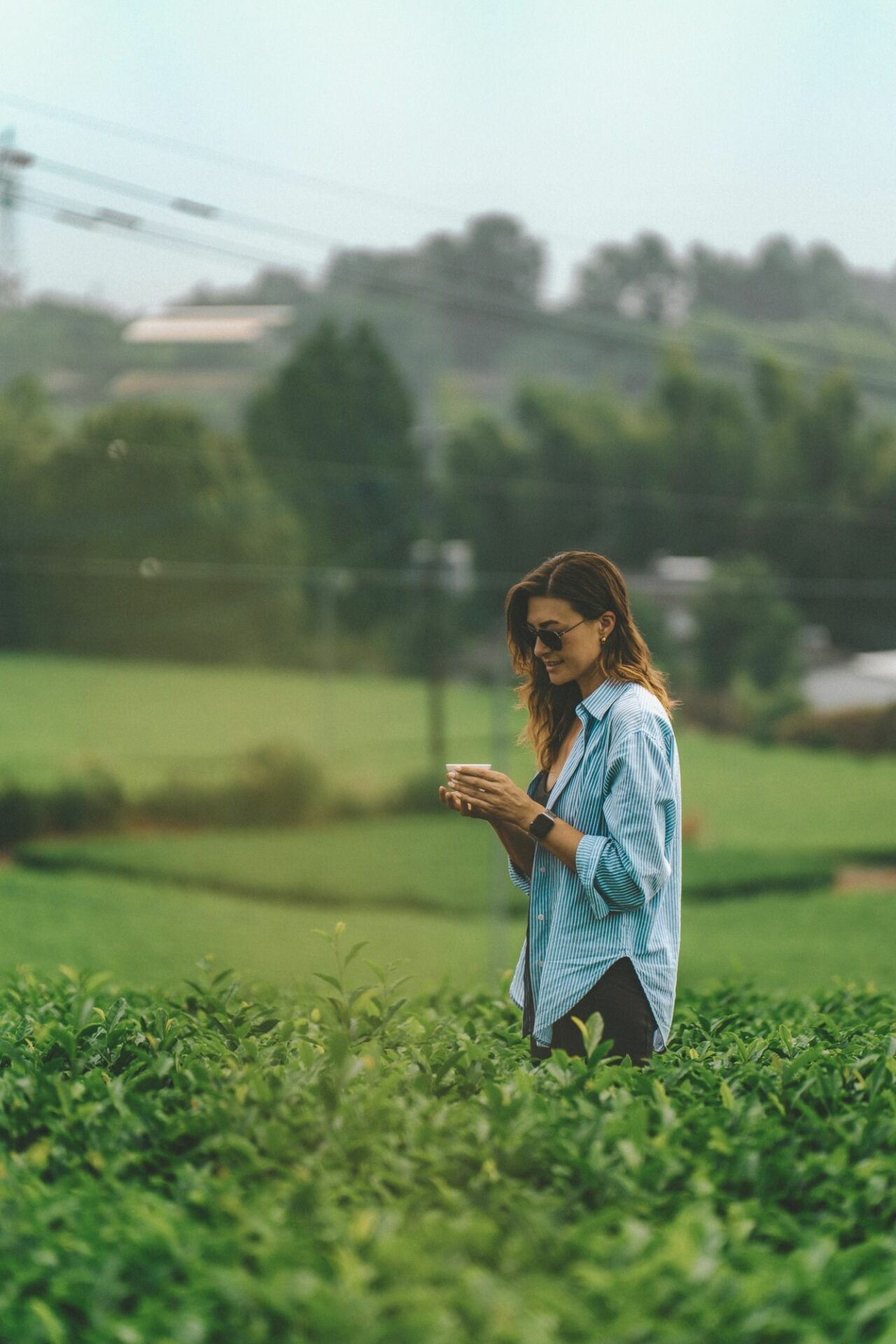
We are Oksana & Max , an ordinary couple living an extraordinary lifestyle! We like to drink tea and travel and use this site to share our travel guides, itineraries and travel tips to help you plan your next adventure!
Since 2015, we’ve been traveling full-time, visiting all 7 continents and over 90 countries on countless adventures in all corners of the world!
Upcoming Travel Plans

Latest Travel Videos

Visiting Ocala, Florida | Scenic Highlights | 2023

Things to do in Fort Myers, Florida | Travel Guide

Things to do in Yosemite, California | Travel Vlog
Sustainable travel.
As avid sustainable travel advocates, we have put together a number of articles with useful tips and advice on exploring more mindfully and responsibly.

Latest Articles
Best places to go in may, 5 best places to go in april | 2024 recommendations, 13 best us destinations for spring break, guide to japanese food: 15 japanese dishes to try, how to visit shiretoko peninsula, hokkaido, japan | 2023 guide, 7 day hokkaido itinerary | japan, featured destinations.
Our home, Canada, has been our playground for many years and we’ve been lucky enough to explore many corners of this beautiful destination.
In 2020-2022, we road-tripped across Canada in our self converted Sprinter Campervan, Benji, exploring many top destinations as well as some off-the-beaten-track regions.
But the adventures didn’t end there…

17 Best Things To Do On Manitoulin Island, Ontario
The ultimate east coast canada road trip: 2 & 4 week itinerary, 14 best things to do in nova scotia: a comprehensive travel guide , best things to do in new brunswick: complete travel guide.
Over the years, Costa Rica has become our home away from home . We visit Costa Rica multiple times a year to see family, to relax on the beaches on Guanacaste, and explore new destinations around the country.
We’ve compiled a large collection of tips and advice for visiting this beautiful country’s top destinations and lesser-known spots.

Best Costa Rica SIM Cards: How to Buy, Recharge, and More
Costa rica rainy season: what it’s like & why we love it, top things to do in guanacaste, costa rica: beaches, wildlife, volcanos and more, the complete guide to visiting nicoya peninsula, costa rica.
From 2009 until 2015, Australia was our home. We lived in Brisbane and traveled extensively throughout Australia.
Over the years, we’ve visited every state in Australia, done many epic road trips (including an 18,000 km half-lap) and ticked off a lot of iconic Australian experiences.
Our adventures continue… We come back to Australia often to visit new destinations on a mission to see every corner of this beautiful country (we’re getting close).

15 Amazing Wineries In The Barossa Valley
The ultimate sydney to brisbane drive itinerary, sydney to melbourne road trip guide, the ultimate eyre peninsula road trip itinerary, south africa.
Having visited South Africa 4 times, we are now convinced – it’s one of the most beautiful and diverse destinations in the world.
From stunning Cape Town, to the charming wine lands of Stellenbosch and Franschhoek, to adventures along the Garden Route, off the beaten path National Parks, and of course the wildlife mecca of Kruger – this country has something for everyone!

Stay in Touch
Sign up today and get an inside scoop on our unconventional life!
PLUS regular updates with new posts and behind-the-scenes stories!
Subscribe to our Newsletter

Download Japan Trip Itinerary
Enter your name and email to get our Japan Trip brochure with more details about this trip in your inbox.
Join our 2025 Group Trips Pre-sale List
Be the first to know about NEW Trips and SPECIAL Offers!
Have 5 minutes to share more info? Fill out the Pre-Sale trip survey HERE
Interested in joining us in Japan?
Love the sound of this trip? Ready to book? Have some questions?
Send an inquiry and let's chat!
Leave your details below and be the first to get updates, special deals, and connect with us directly about this trip!
Reignite the Feminine Retreat
Love the idea of a women-only retreat in September 2024?
Help me decide where we should go!
Our women-only gatherings will be limited to 8-10 people, so leave your details below to add yourself to the waitlist.
We'll email you first to share all the details of the trip.
The Business of Fashion
Agenda-setting intelligence, analysis and advice for the global fashion community.
News & Analysis
- Professional Exclusives
- The News in Brief
- Sustainability
- Direct-to-Consumer
- Global Markets
- Fashion Week
- Workplace & Talent
- Entrepreneurship
- Financial Markets
- Newsletters
- Case Studies
- Masterclasses
- Special Editions
- The State of Fashion
- Read Careers Advice
- BoF Professional
- BoF Careers
- BoF Insights
- Our Journalism
- Work With Us
- Read daily fashion news
- Download special reports
- Sign up for essential email briefings
- Follow topics of interest
- Receive event invitations
- Create job alerts
Chinese Tourists Are Again Embracing International Travel
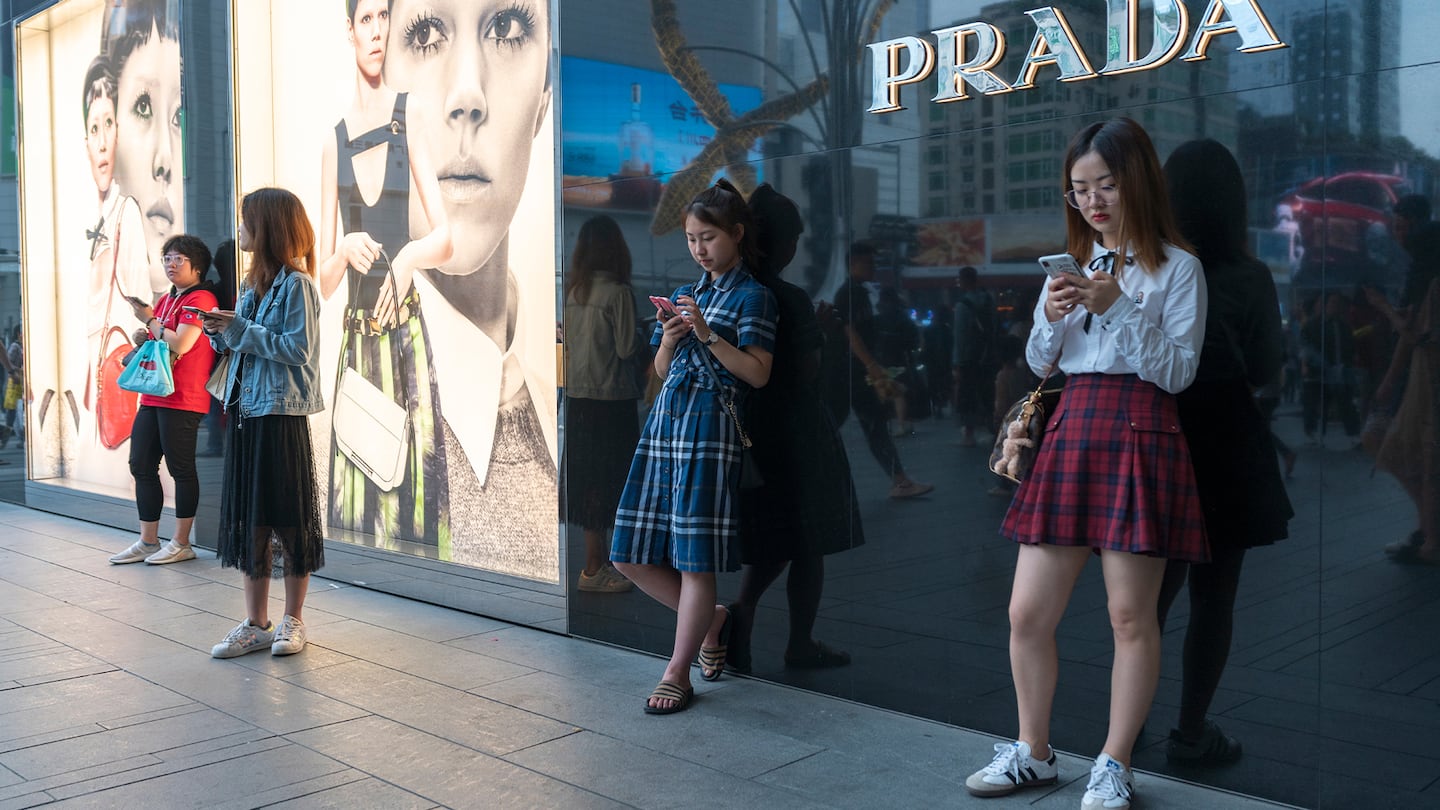
More than a year since China reopened its borders, some 63 percent of its residents say they’re ready to return to exploring the world, according to a survey published on Wednesday, which Bloomberg previewed. They plan to venture further afield than previously, with just 10 percent spurning international travel altogether — a significant shift from a year ago, when more than half of China’s consumers said they had no plans to go abroad and 31 percent said they weren’t even interested.
The return of China’s travellers has long been awaited in the travel industry, which is expected to surpass pre-pandemic levels this year by contributing $11.1 trillion to the global economy. The March 6–19 survey by marketing solutions firm Dragon Trail International queried 1,015 mainland Chinese leisure travellers located in 127 places, including first-, second- and third-tier cities.
“We are now past the initial reopening and well into recovery,” says Sienna Parulis-Cook, Dragon Trail’s director of marketing and communications, “and we can see that travellers are much less hesitant about venturing outbound than they were a year ago.”
As of early April, outbound trip bookings for China’s weeklong May holiday lagged 2019 levels by only 13 percent, according to Dragon Trail, and included such places as Egypt and United Arab Emirates. The China Tourism Academy predicted that global Chinese tourist numbers will reach 130 million in 2024 — 84 percent of levels before the pandemic struck. In 2019, some 155 million outbound Chinese travellers spent $253 billion abroad.
ADVERTISEMENT
Destinations that have either waived the visa process for Chinese citizens or are offering electronic visas on arrival include Singapore, Malaysia, Thailand, and the Middle East and North Africa. The United Arab Emirates, Egypt and Jordan are predicted to lead the recovery in Chinese tourism, says Alina Xiang, who specialises in China as president and chief executive officer of East West Marketing.
Australia, the United Arab Emirates, the UK, Italy, New Zealand, Turkey, Qatar and Egypt are among the destinations whose flight capacities with China surpass levels before the pandemic, according to data from the Civil Aviation Administration of China that was provided by East West Marketing.
Dragon Trail’s survey shows that of 181 respondents who say they’ve already made overseas travel plans, 94 percent have booked trips to more than one destination. Some 16 percent said they would head to Europe.
Shopping is on the agenda for many. Nearly one-fourth said they will budget from $5,000 to $10,000 for shopping per trip, with 16 percent saying they would spend more. “It’s a really an important part of the Chinese outbound travel experience,” says Parulis-Cook. Retailers have suffered without such high-spending Chinese tourists.
In the first quarter, LVMH Moet Hennessy Louis Vuitton SE reported, “Chinese demand for fashion and leather goods — at home and abroad — rose almost 10 percent,” a bright spot in an otherwise-underwhelming performance.
The US travel industry is in for a longer wait than other major tourist destinations when it comes to reaping rewards from Chinese travel. Amid delays in visa issuance, first-quarter flights between the US and China remained 78.8 percent below those in the same period in 2019, according to data provided by aviation analytics firm Cirium. This contrasts with a near rebound for flights between the US and the rest of Asia, just 4 percent below pre-pandemic levels.
Still, Chinese travellers’ poor perception of the US has changed significantly since the pandemic. In 2021, 87 percent said they considered the US an unsafe tourist destination. In March, only 36% voiced that perception.
By Lebawit Lily Girma
Learn more:
Why Fewer Chinese Are Shopping in Europe’s Fashion Hubs
Post-Covid spend by US tourists in Europe has surged past 2019 levels. Chinese travellers, by contrast, have largely favoured domestic and regional destinations like Hong Kong, Singapore and Japan.
- China : Consumers
© 2024 The Business of Fashion. All rights reserved. For more information read our Terms & Conditions

Can H&M and Zara Compete with Chinese Rivals?
With consumers tightening their belts in China, the battle between global fast fashion brands and local high street giants has intensified.
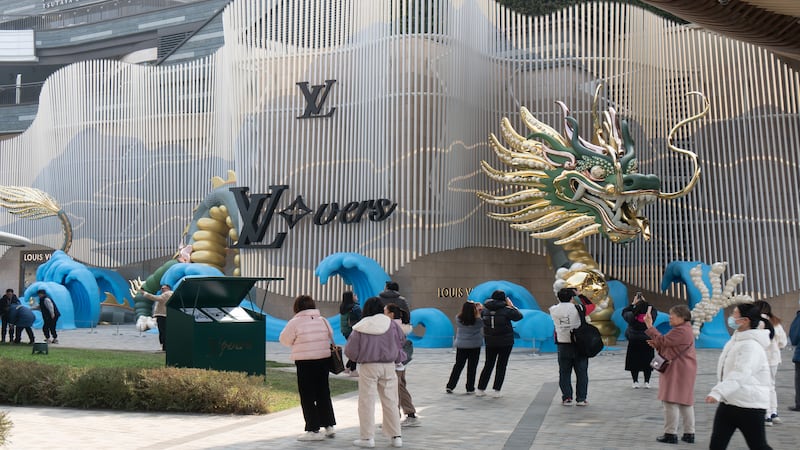
China Uncertainty Clouds Outlook for Luxury Sector
Investors are bracing for a steep slowdown in luxury sales when luxury companies report their first quarter results, reflecting lacklustre Chinese demand.
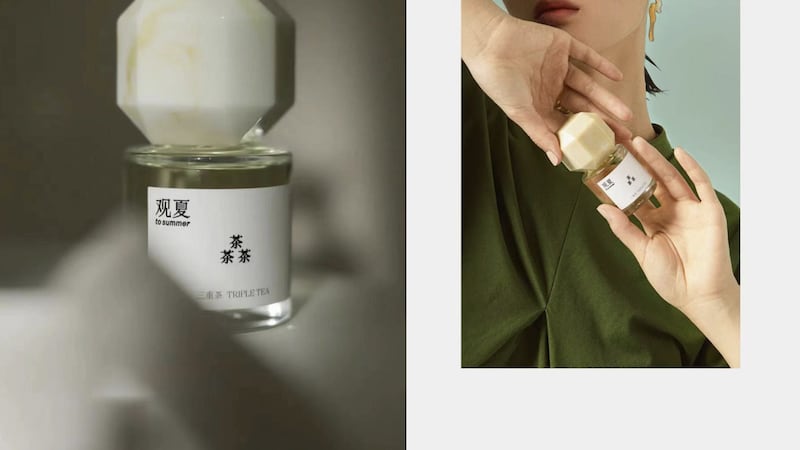
Why L’Oréal Is Investing in Niche Chinese Fragrance Brands
The French beauty giant’s two latest deals are part of a wider M&A push by global players to capture a larger slice of the China market, targeting buzzy high-end brands that offer products with distinctive Chinese elements.
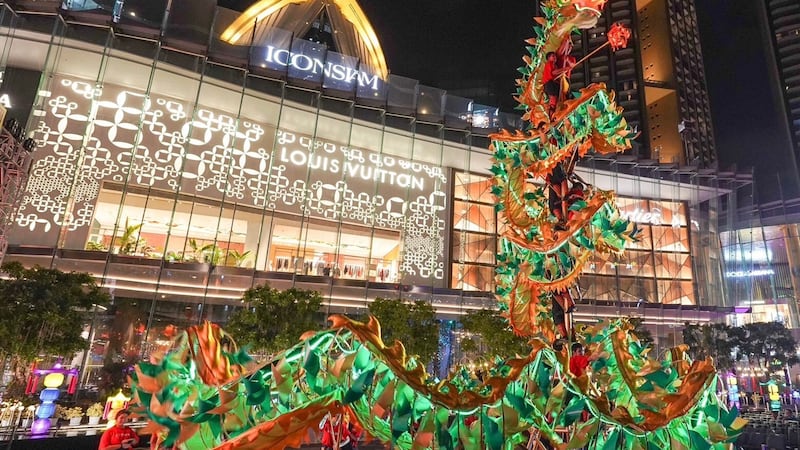
Subscribe to the BoF Daily Digest
The essential daily round-up of fashion news, analysis, and breaking news alerts.
Our newsletters may include 3rd-party advertising, by subscribing you agree to the Terms and Conditions & Privacy Policy .
Our Products
- BoF Insights Opens in new window

We've detected unusual activity from your computer network
To continue, please click the box below to let us know you're not a robot.
Why did this happen?
Please make sure your browser supports JavaScript and cookies and that you are not blocking them from loading. For more information you can review our Terms of Service and Cookie Policy .
For inquiries related to this message please contact our support team and provide the reference ID below.
- Share full article
Advertisement
Supported by
When U.S. Diplomats Visit China, Meal Choices Are About More Than Taste Buds
Visits to China by American officials like Secretary of State Antony J. Blinken can bring fame to local restaurants, as well as scrutiny to the dignitaries.

By Yan Zhuang
Beijing beer made with American hops, to highlight the trade relationship between the two countries. Tibetan food, to send a human rights message. Mushrooms with possible hallucinogenic properties, just because they taste good.
Where, what and how American dignitaries eat when they visit China is a serious matter. Choices of restaurants and dishes are rife with opportunities for geopolitical symbolism, as well as controversy and mockery. Chopstick skills — or a lack thereof — can be a sign of cultural competence or illiteracy.
An exorbitantly expensive meal can make an official look out of touch. Too cheap or informal, and you risk appearing undignified. Authenticity, history, cooking technique and taste can all affect the perception of a meal choice.
When Secretary of State Antony J. Blinken started a trip through China on Wednesday, part of the Biden administration’s efforts to stabilize the relationship between the two countries, some on Chinese social media wondered whether he would have time on his visit to Shanghai to stop and try some of the city’s famous xiaolongbao (soup dumplings).
One recommendation that he do so came with something of a political warning: “Eating xiaolongbao is just like handling international relations,” a commentator wrote on Weibo . “If your attention slips even a little, you’ll burn your mouth.”
Mr. Blinken did in fact visit a renowned soup dumpling restaurant that night. It’s unclear how much he considered the symbolism of his dumplings, but by indulging in a traditional popular snack, and by attending a basketball game, the optics suggested there was a more cordial spirit than on the trip he made last year, soon after a Chinese spy balloon drifting across the United States had heightened tensions.
While in Beijing, Mr. Blinken visited a notable establishment, in addition to the city’s restaurants: Li-Pi Records. Mr. Blinken — a musician who has touted “musical diplomacy” — bought two records: an album by the Chinese rocker Dou Wei, and Taylor Swift’s “Midnights,” which he described as a successful American export.
Mr. Blinken’s eating habits have drawn far less interest than that of Treasury Secretary Janet Yellen. Over two trips, this month and last year, her meals in China attracted so much attention that the state-run Global Times deemed it a form of “food diplomacy.”
Last year, Ms. Yellen made headlines when, at a restaurant in Beijing serving cuisine from Yunnan Province, she ate mushrooms that were revealed to be mildly toxic and could cause hallucinations if not cooked properly.
Ms. Yellen later said that she was not aware of the mushrooms’ potential hallucinogenic properties when she ate them and felt no abnormal effects. Still, the story sparked a brief craze for the mushrooms in China.
This month, during a four-day trip to China, Ms. Yellen visited a famed Cantonese restaurant in Guangzhou, and a Sichuan restaurant in Beijing. The dishes she ordered were quickly posted online, drawing broad approval from commenters for the variety and affordability of the dishes ordered, her chopstick skills and the fact that she and her team sat among other diners instead of in a private room.
The dishes Ms. Yellen and her team ordered were classic meals from their respective regions and were not modified to foreign tastes, according to Fuchsia Dunlop, a London-based cook and food writer who specializes in Chinese cuisine.
“They haven’t chosen really expensive, show-off dishes and ingredients,” Ms. Dunlop said, speaking about the Sichuan meal. “This is very much what everyday people in Sichuan like to eat. This menu was chosen for flavor, not prestige.”
According to a Treasury Department spokeswoman, the department generally solicits suggestions from staff at the local embassy for restaurant recommendations when Ms. Yellen travels. Then, Ms. Yellen will research the restaurants herself and make the final decision.
On occasion, specific establishments will be chosen to convey a diplomatic message, the spokeswoman added. She cited Ms. Yellen’s visit this month to a brewery in Beijing that uses American hops, aimed to highlight the significance of American agricultural exports to China.
Some restaurants where Ms. Yellen has dined have capitalized on her fame, like the Yunnan restaurant where she ate the mushrooms, which released a set menu based on what she ordered, called the “ God of Money ” menu, a nod to her position as Treasury secretary.
Ms. Yellen isn’t the first American dignitary to turn Chinese restaurants into overnight sensations. In 2011, a visit by then-Vice President Joe Biden to a Beijing noodle restaurant sent its business skyrocketing, according to Chinese state media, and led the restaurant to create a “Biden set” noodle menu.
In 2014, after Michelle Obama visited a hot pot restaurant in the city of Chengdu, the restaurant said it would create an “American First Lady” set menu. Articles in Chinese media noted approvingly that Mrs. Obama was able to handle the spicy soup, which was not toned down for a foreign palate.
Her visit to a Tibetan restaurant in the same city, however, attracted controversy, and her staff at the time readily acknowledged that the venue had been chosen deliberately to show support for the rights and religious liberties of Tibetans in China.
But for Mrs. Obama’s husband and other U.S. presidents, Chinese cuisine served at official state banquets is often Americanized or customized to better suit a foreign palette.
In 2009, President Barack Obama was served a Chinese-style beef steak and baked fish, according to Chinese state media, and in 2017, President Donald J. Trump ate dishes including kung pao chicken and stewed boneless beef in tomato sauce. Both meals finished with fruit ice cream, which is highly atypical of traditional Chinese meals.
But even those meals may hint at an international trend, Ms. Dunlop said. Mr. Obama’s menu contained “very safe, conservative choices that would be appealing to foreigners,” she said, while Mr. Trump’s menu was slightly more contemporary and showed off more Chinese cooking techniques.
That shift, Ms. Dunlop said, “may reflect China feeling a bit more confident with Westerners’ familiarity with real Chinese food” in 2017 versus 2009.
Ana Swanson contributed reporting.
Yan Zhuang is a Times reporter in Seoul who covers breaking news. More about Yan Zhuang

IMAGES
COMMENTS
China Base Travel runs three-day Wuyi Mountain and oolong tea tours year round. Wuyi Shan UNESCO World Heritage Site; daily from 7:30 a.m.; admission RMB 235 ($3 8 ) for a two-day pass Sri Lanka ...
Chinese Tea, Discover Chinese Tea Culture and History. Tea is an important part of Chinese tradition. As Chinese society developed and progressed, tea production has played a role in driving economic development while tea consumption has remained a practice of daily life. The practice of tea culture can bring the spirit and wisdom of human ...
Esther. 2023-12-23. Chinese Culture. China, hailed as the birthplace of tea, boasts a rich tradition that has endured centuries. Our meticulous study will cast a spotlight on the esteemed varieties: Green Tea, Black Tea, White Tea, Oolong Tea, Yellow Tea, and Dark Tea. Each type, steeped in history, craftsmanship, and regional distinction ...
Chinese tea culture prospered during the Tang Dynasty (618 - 907) because of a famous person, Lu Yu, Tea Sage of China. The Tea Classics wrote by him is a tea encyclopedia, detailing rules concerning various aspects of tea, such as growth areas for tea trees, wares and skills for processing and tasting of tea, and the history of Chinese tea.
In this exploration, we will traverse the lush hills and mist-covered valleys to discover the must-visit tea plantations in China, where the art of tea cultivation and the beauty of nature converge. Hangzhou: Longjing Tea Plantations. Our journey begins in Hangzhou, where the legendary Longjing tea plantations sprawl across the West Lake region.
The tea culture reflects the oriental traditional culture, combining tea with Tao wisdom, pronounced in Chinese as Dao, which is an integral part of Chinese culture. The Dao of tea stresses the fact of being harmonious, quiet, optimistic, and authentic. Peace of mind is the first step to getting to tranquillity as a spiritual purpose in order ...
6 Major Types of Tea. There are six major types of tea in China - green tea, black tea, Oolong tea, dark tea, white tea, and reprocessed tea, distinguished mainly by different methods of production. Folklore relates each type of tea to certain human characteristics. Thus it is said that green tea, simple and light, stands for the ...
Longjing Tea or dragon well tea of more than 1200 years old is the No. 1 tea in China and regarded as the "Green Queen". Visit Longjing Tea plantations in Hangzhou to appreciate the charming verdant sightseeing and know more about the culture of tea and Chinese nation. Type: Cultural Villages, Walking Places, Natural Sightseeing Places.
Location: Jiangsu Province, East China Famous tea: Green Spiral Tea type: green tea A popular choice for China's second favorite imperial tea is Suzhou's Green Spiral Tea (Dongting Bi Luo Chun, 洞庭碧螺春). Like Hangzhou, Suzhou was an imperial retreat for Beijing's elite. Suzhou's ornate gardens were doubtless the setting for many a classy "cuppa" over the centuries.
Here are 10 interesting facts about Chinese tea to help you learn more about it. 1. Tea Has a 3,000-Year History in China. China is the homeland of tea. Wild tea trees from over 3,000 years ago, where tea was once farmed, and extant cultivated tea areas dating back to 800 years ago, can still be found in Southwest China.
Best Chinese tea travel packages. If you are looking for the ultimate Chinese tea travel package that includes visits to the best tea destinations such as Zhangjiajie, Huangshan, Hangzhou, Fujian, and Yunnan, along with an expertly crafted itinerary that allows you to experience the diverse tea cultures and customs of China, luxurious accommodations in top-rated hotels, fine dining experiences ...
Tea Culture. The Chinese have a saying: 'Firewood, rice, oil, salt, sauce, vinegar and tea are the seven necessities to begin a day.'. Though tea is last on the list, we still can see its importance in daily life. A simple meal in Chinese is Cu Cha Dan Fan, namely coarse tea and tasteless dinner. Even a simple meal is finished off with tea so ...
Chinese tea acts as beverage, pastime, culture icon, and undoubtedly a life time of enjoyment for thousands of years. Tea in China, along with silk and porcelain, spread to the other part of the world through trading routes of Silk Road and Tea & Horse Road. Experience Chinese tea culture by exploring mist-covered mountains and plantations ...
For those who don't have time to visit the Maliandao Tea Market, we can also take you to Wuyutai Tea Shop, a chain with a long history that has a lot of stores across Beijing. Popular Tours. 1-Day Beijing and the Great Wall tour; 2-Day Beijing tour; 3-Day Beijing tour; Golden Triangle of China - 9-Day Beijing, Xi'an, Shanghai tour
Our Travel Guides: China in color, story, picture, and poem. 北京欢迎你!Beijjng welcomes you! Download our newest guide to explore from the Great Wall to the forbidden city and visit hidden drinking holes down obscure hutongs! At China Tea Leaves, we believe in making a different kind of travel guide - seeking to share the culture, history
With the family tea plantation as inspiration, our specialist is devoted to spreading China's tea culture, and has taken part in many international tea-promotion films. The Tea Platation. ... Best (& Worst) Times to Visit China, Travel Tips (2024/2025) Start planning your tailor-made tour with 1-1 help from our travel advisors. ...
Being the only one museum themed with tea and tea culture in China mainland, China National Tea Museum (中国茶叶博物馆) is especially worth for a visit to have a taste of China's profound tea culture and long history that have been lasting for at least 4700 years. Opened to the public in 1990, with a cover of 2244 square meter for exhibition in the whole construction area of 7600 ...
Best Time to Visit: Spring the right time for Tea Culture tour in Fujian, March for Green Tea, April and May are good time for rock tea.; Where to Visit: Wuyi Shan UNESCO World Heritage Site: daily from 7:30 a.m.; admission RMB 235 ($38) for a two-day pass. Royal Tea Garden in Wuyi Mountain, Fujian and Fujian Fuding Diantou Tea Garden are also best places to experience Fujian tea culture.
However, there was a record dating back to the Zhou Dynasty (1046-256 BC) about the usage of tea in a Chinese dictionary-The Erya. China was the first country to discover tea in the world. Tea was used as a medicine to make people stay awake at the beginning. Tea was still used as a medicine functional plant in Han Dynasty (206B.C.-220A.D.)
World Tea Tours is the original pioneer of tea adventure travel. For nearly 30 years our programs have been designed and led by world renowned, professional tea authorities from around the world. Each custom-crafted tour is a combination of abundant, hands-on, invaluable tea experiences mixed with real involvement with the native cultures of tea producing and consuming regions. All tour format ...
Two Americans, artists by nature, Greta an architectural designer, Jim a writer, brought to China by work, coming to love 中国 (zhong guo) and its people. We hope China Tea Leaves gives a unique perspective on China, from "foreigners" living in the Middle Kingdom, who have a firsthand experience of this incredible culture. We're trying to open up a little bit of China to the world, in ...
Come with Greta Bilek, author of China Tea Leaves travel guides and explorer of China, on your dream trip to Yunnan province. Yunnan province is located in southwestern China, tucked between Tibet, Sichuan and Guangxi provinces, Myanmar, and Vietnam, and is one of the most diverse provinces in China, with dozens of ethnic minorities; flowers ...
an ordinary couple living an extraordinary lifestyle! We like to drink tea and travel and use this site to share our travel guides, itineraries and travel tips to help you plan your next adventure! Since 2015, we've been traveling full-time, visiting all 7 continents and over 90 countries on countless adventures in all corners of the world!
The return of China's travellers has long been awaited in the travel industry, which is expected to surpass pre-pandemic levels this year by contributing $11.1 trillion to the global economy. The March 6-19 survey by marketing solutions firm Dragon Trail International queried 1,015 mainland Chinese leisure travellers located in 127 places ...
The return of China's travelers has long been awaited in the travel industry, which is expected to surpass pre-pandemic levels this year by contributing $11.1 trillion to the global economy. The ...
Still, the story sparked a brief craze for the mushrooms in China. This month, during a four-day trip to China, Ms. Yellen visited a famed Cantonese restaurant in Guangzhou, and a Sichuan ...